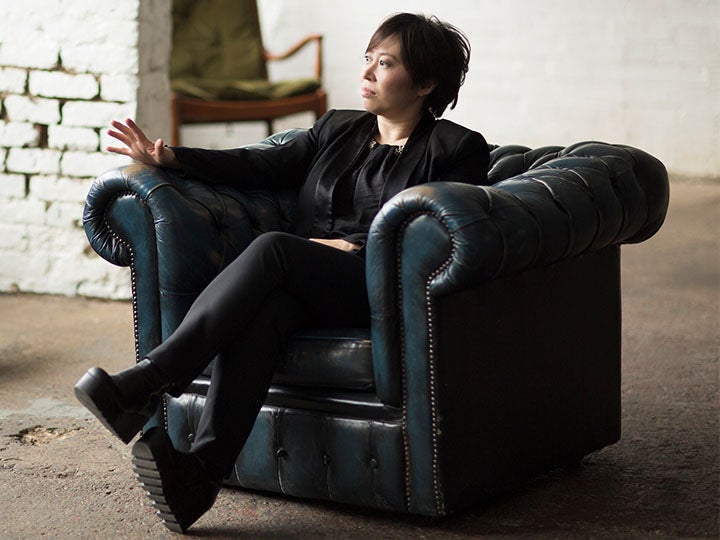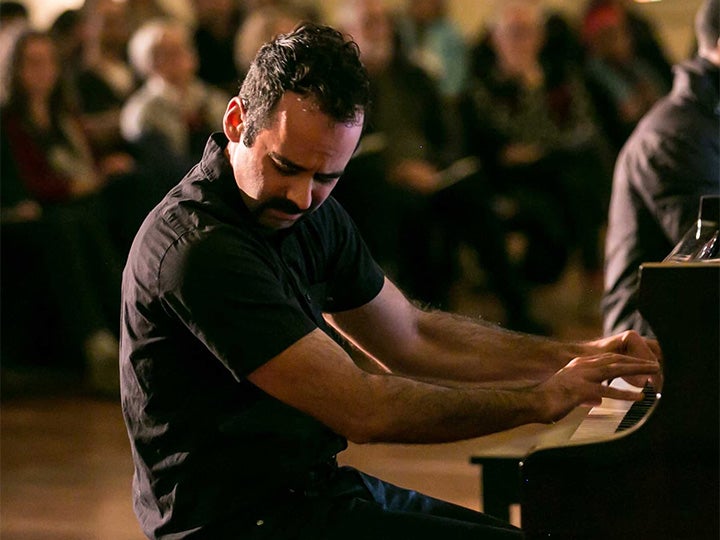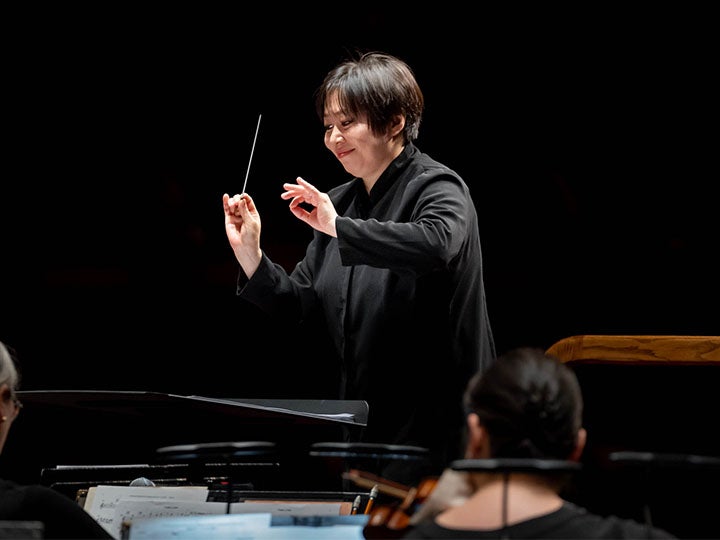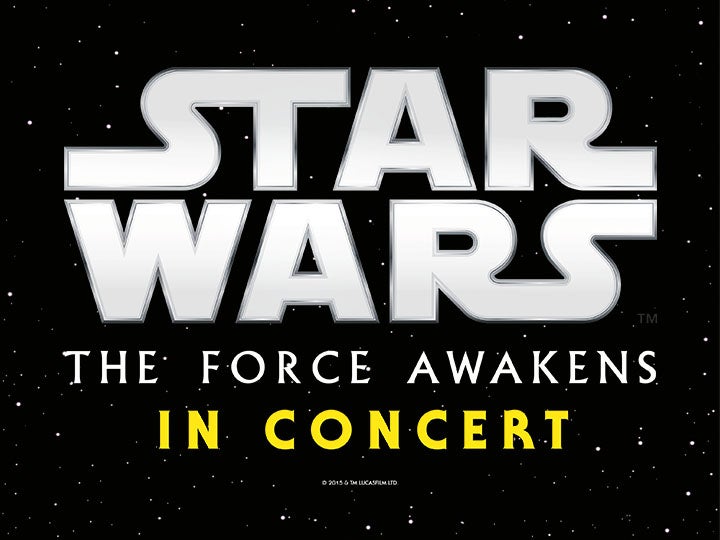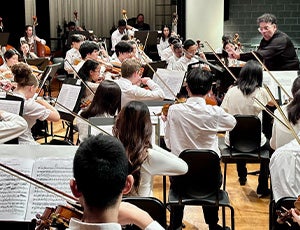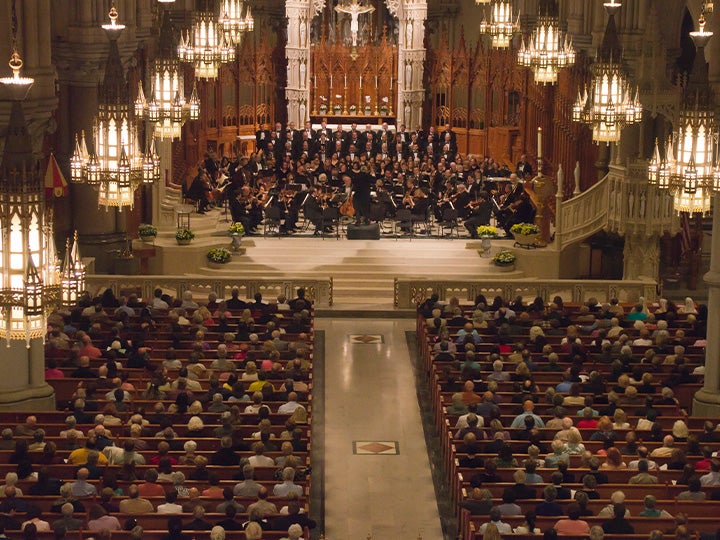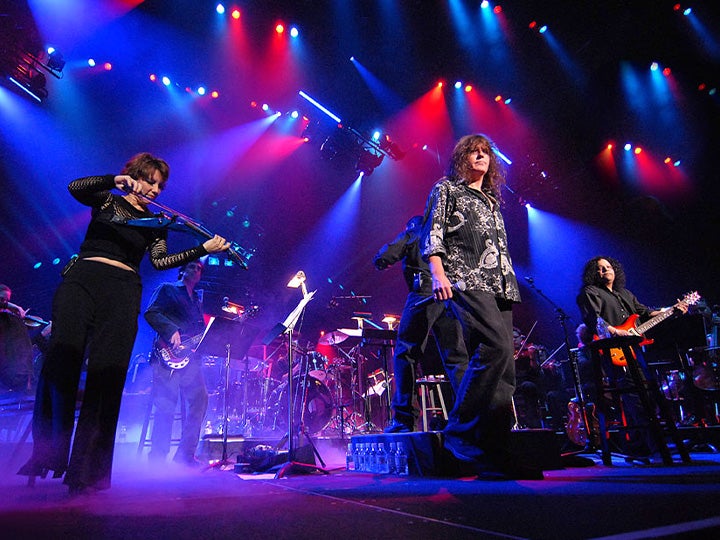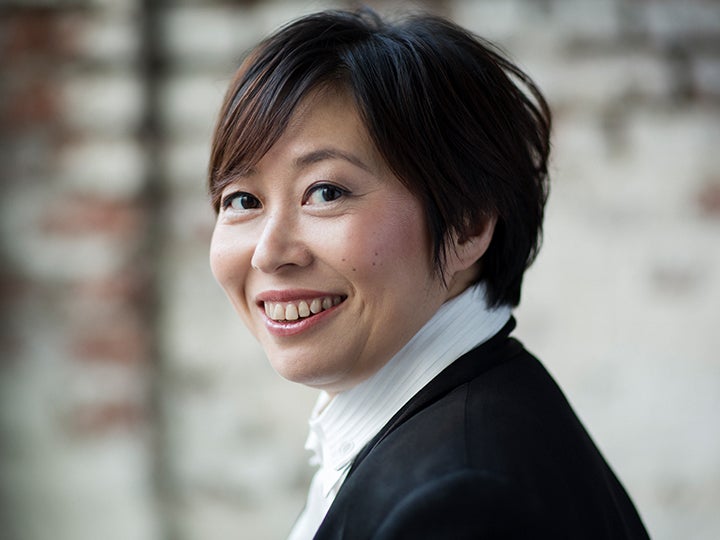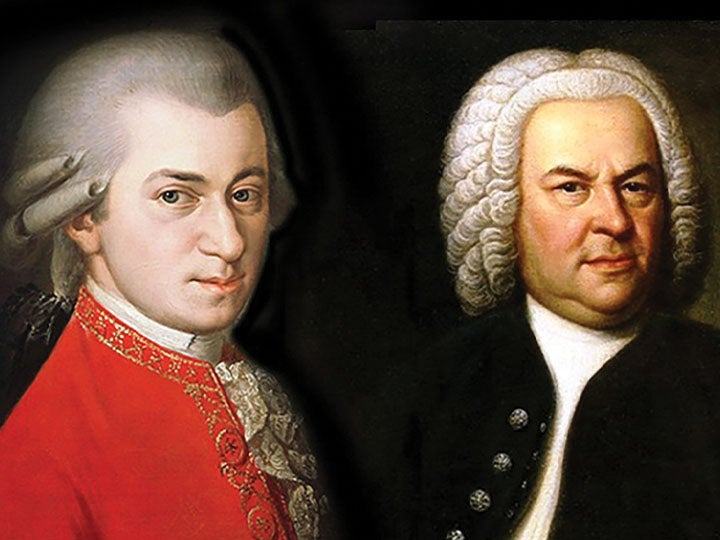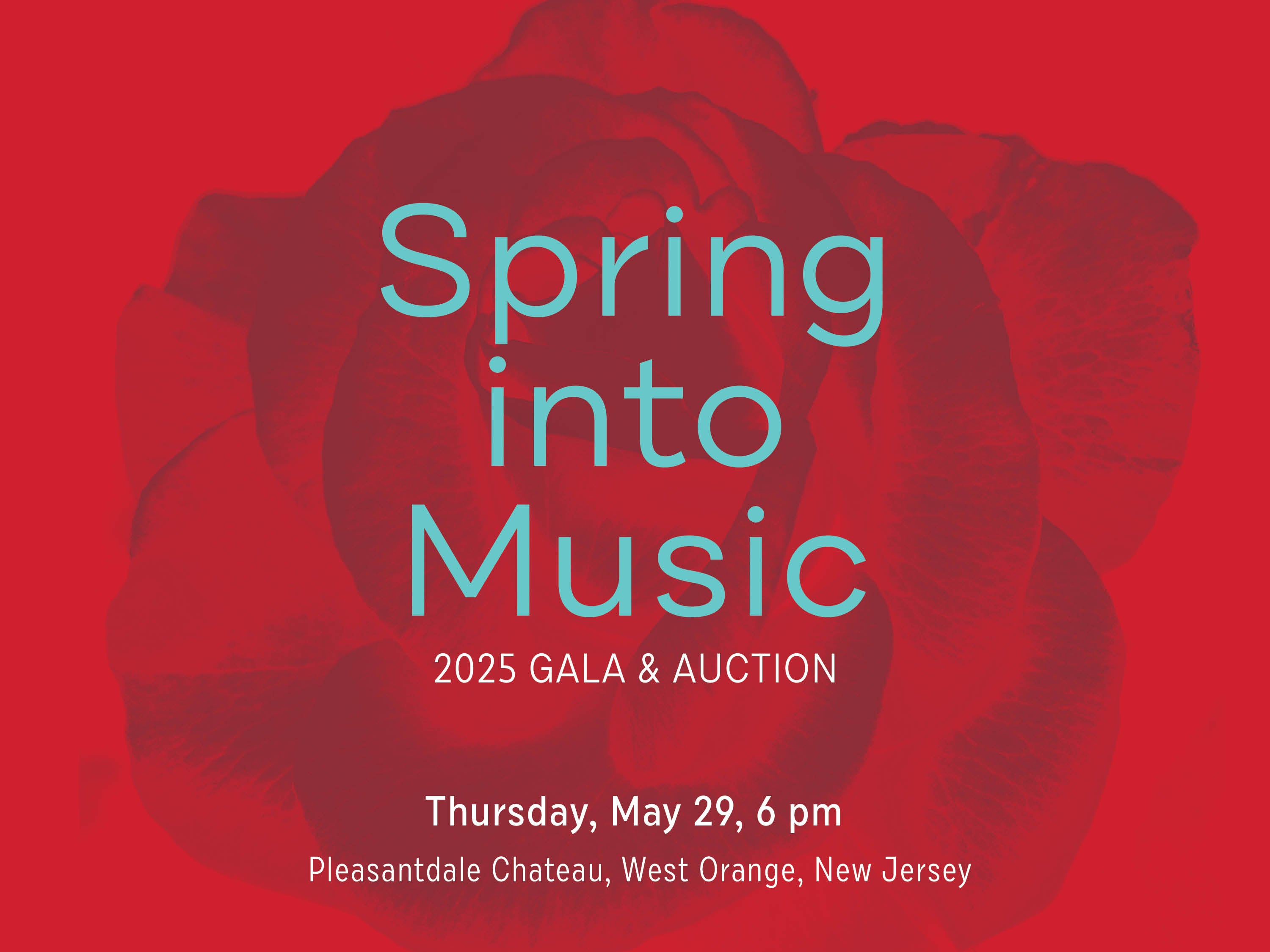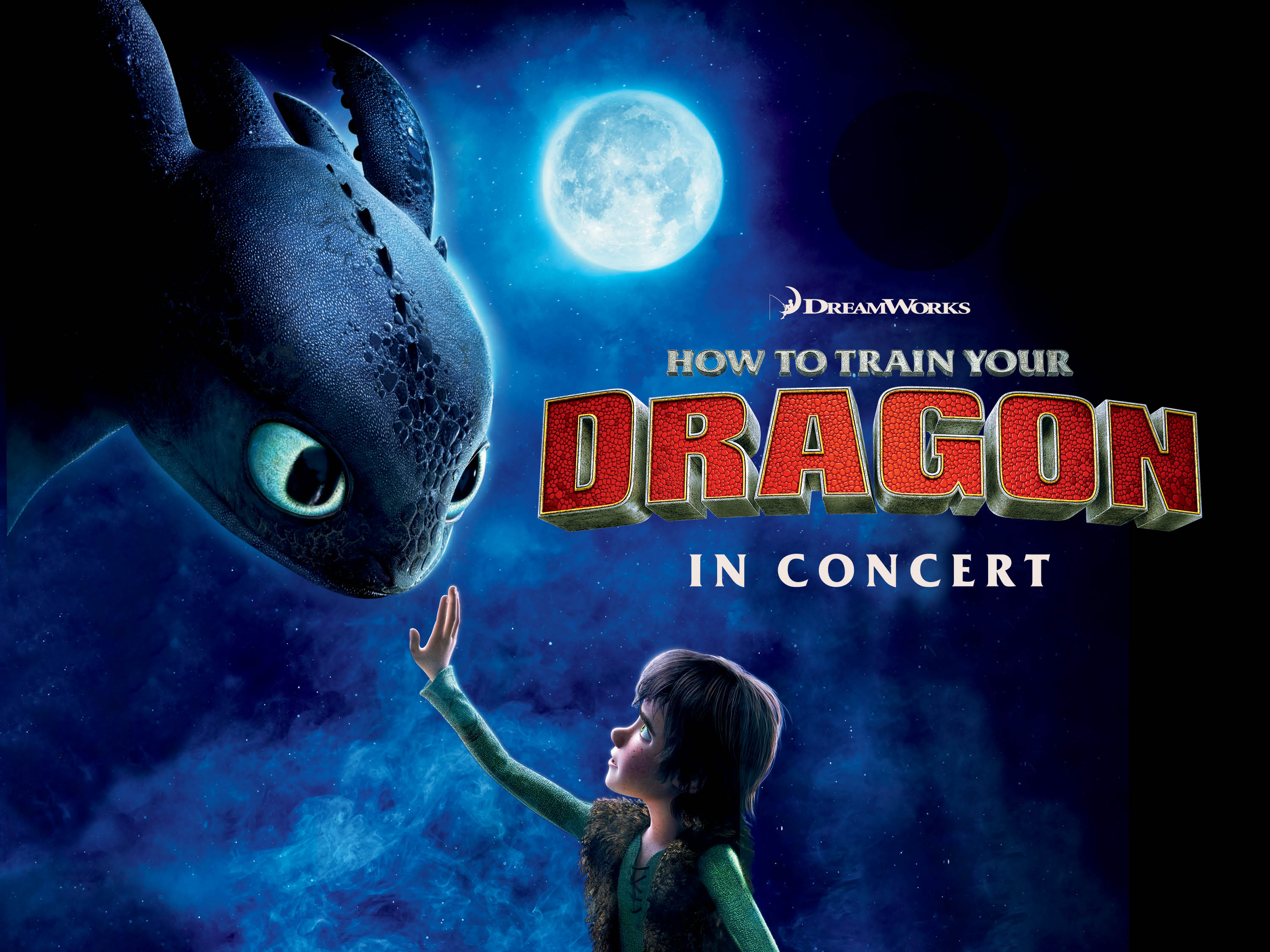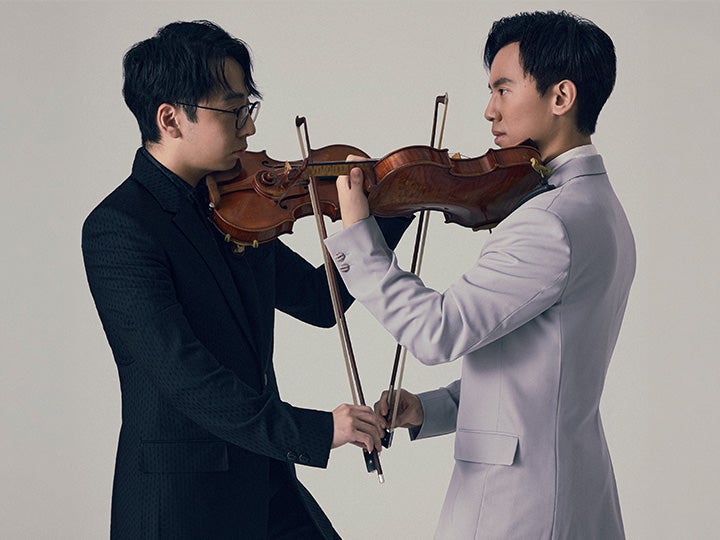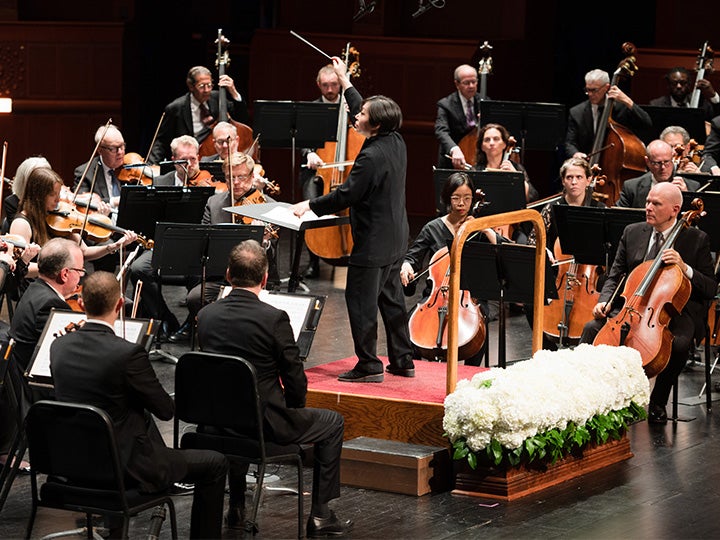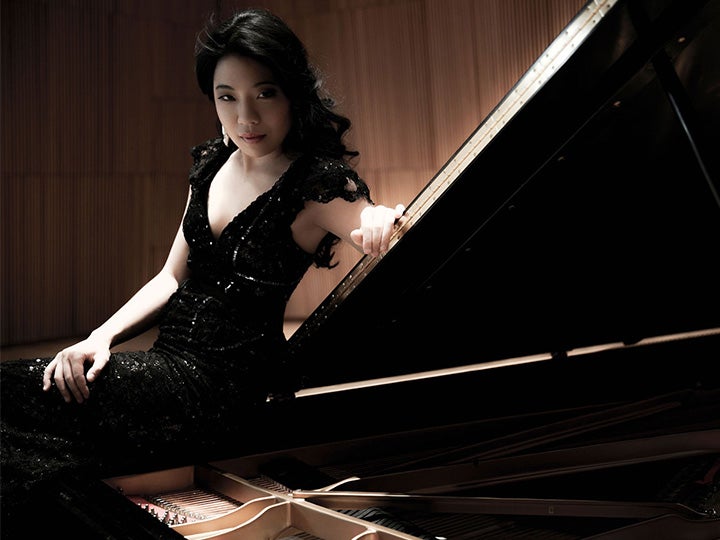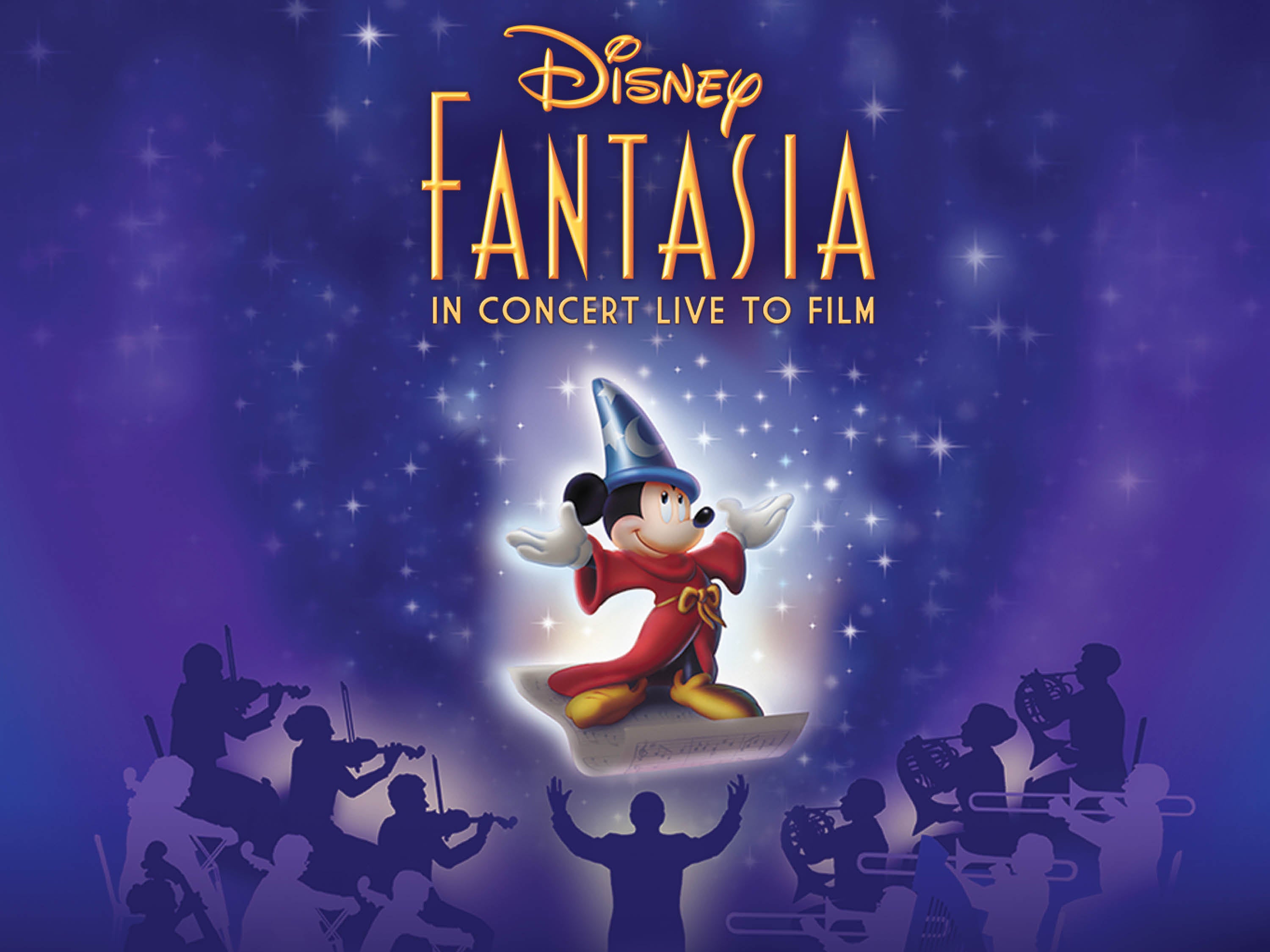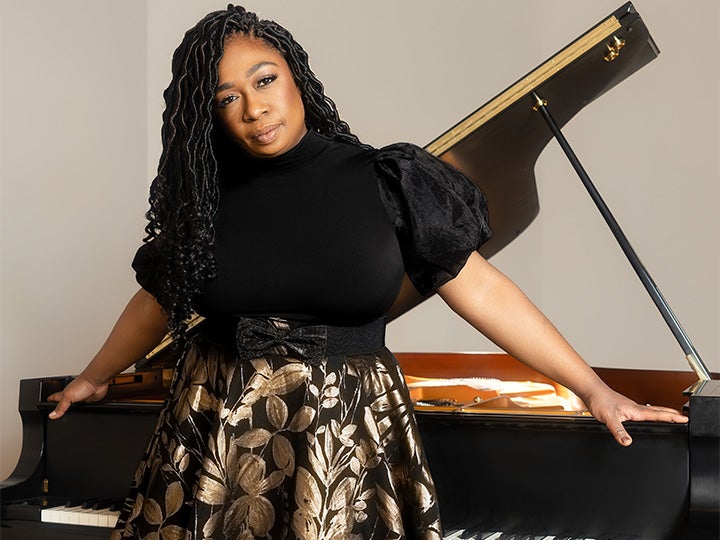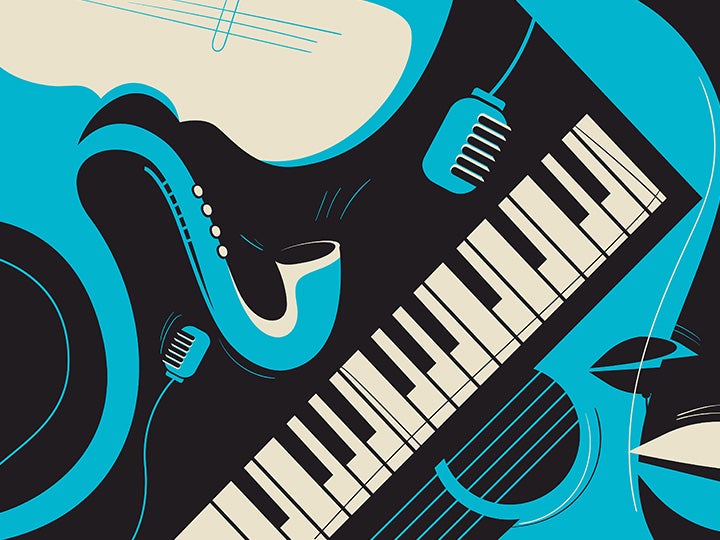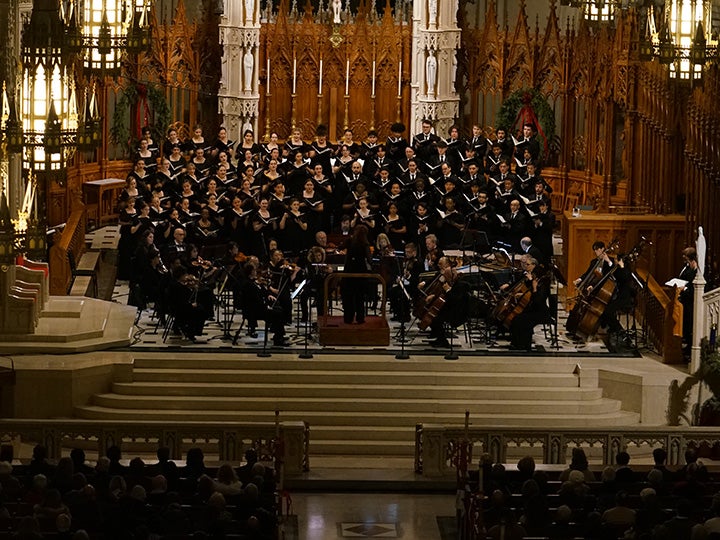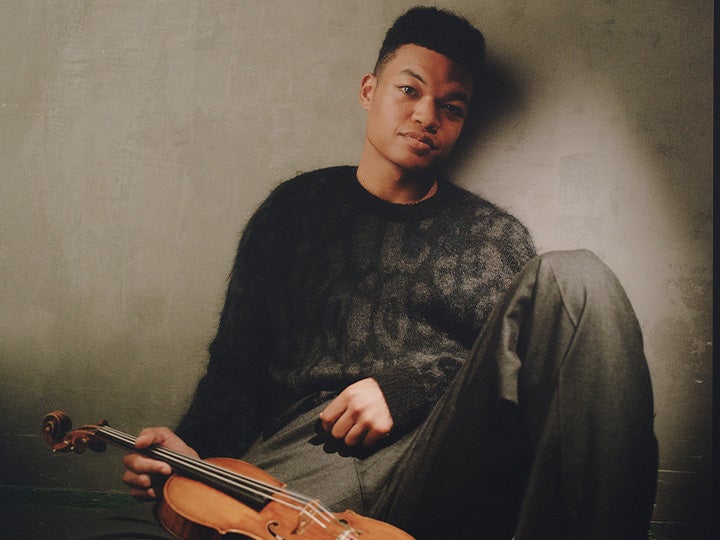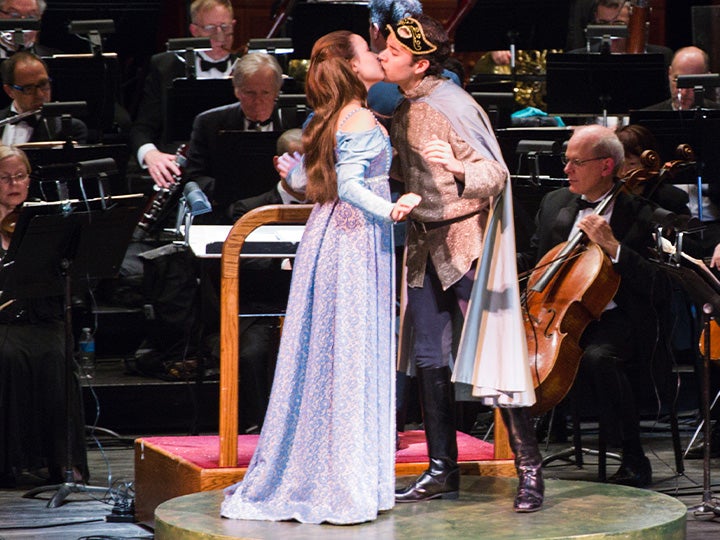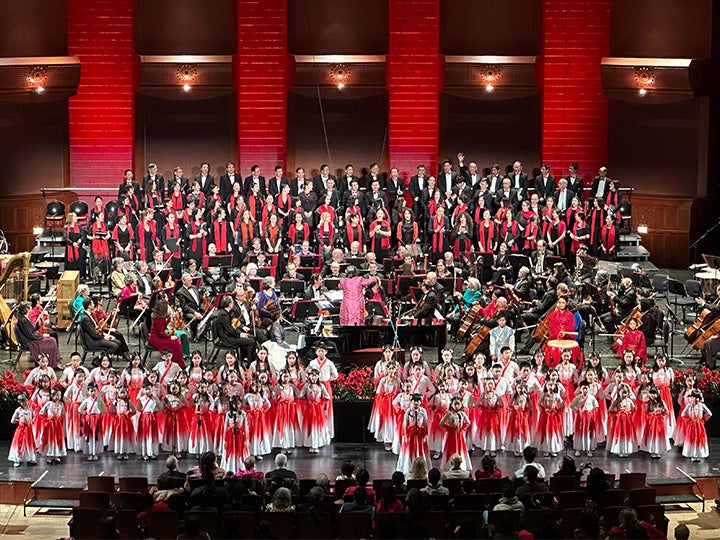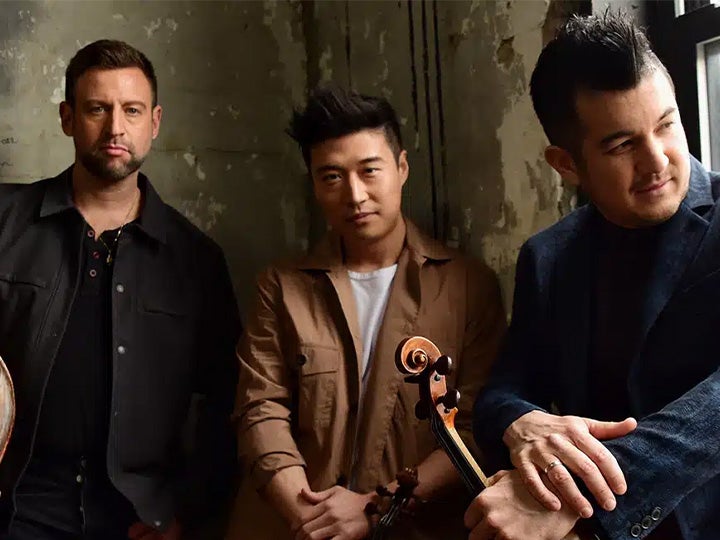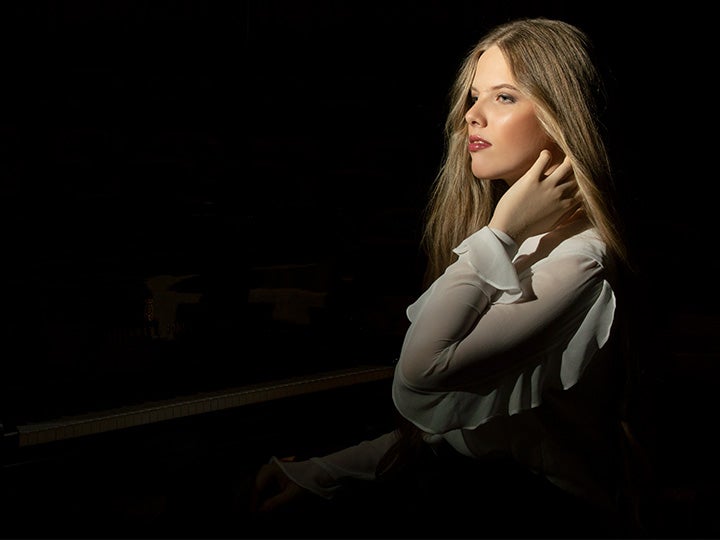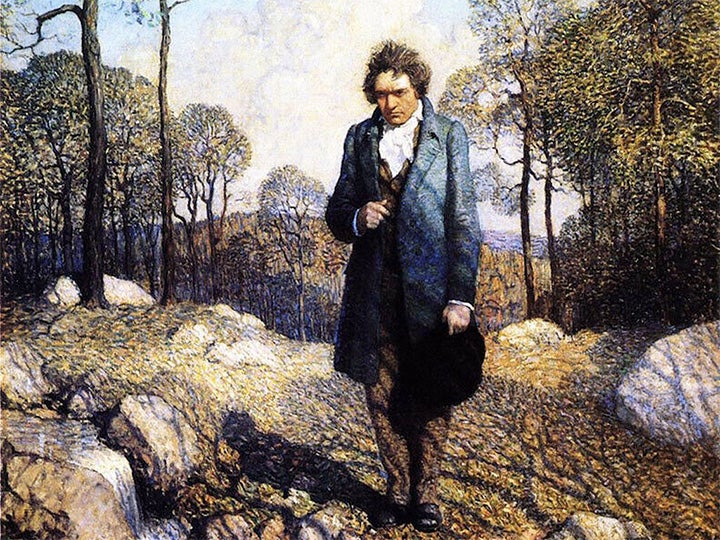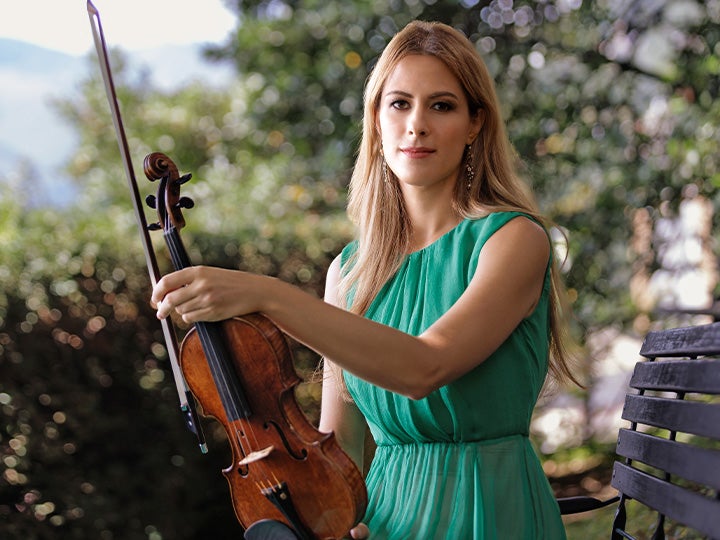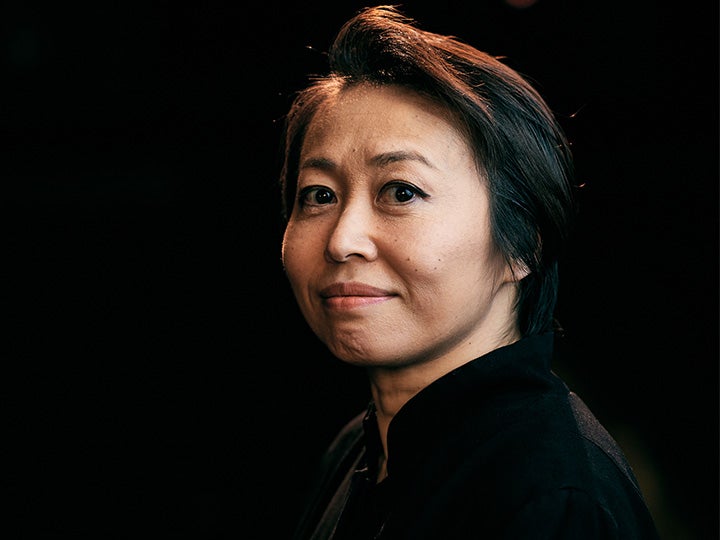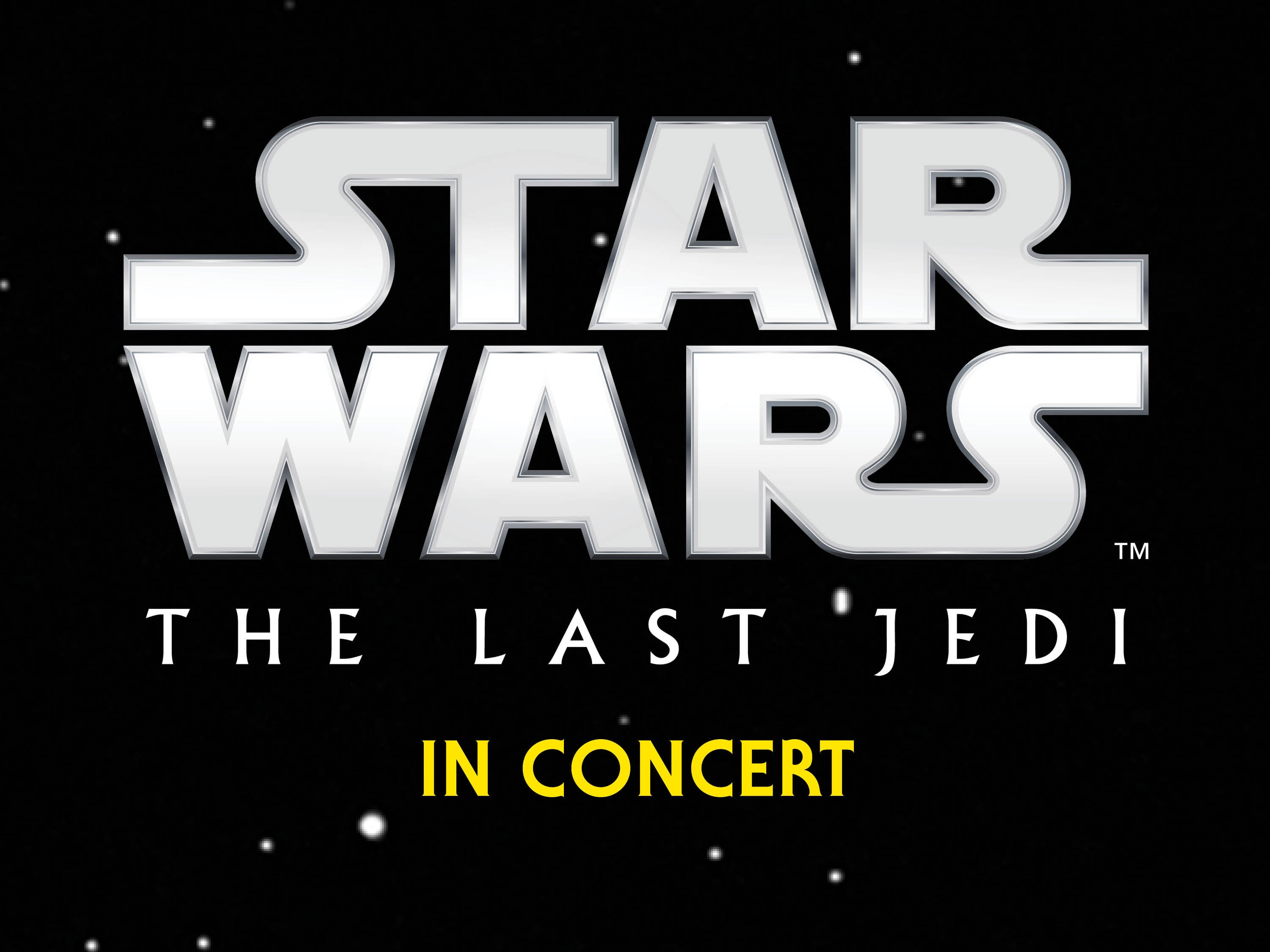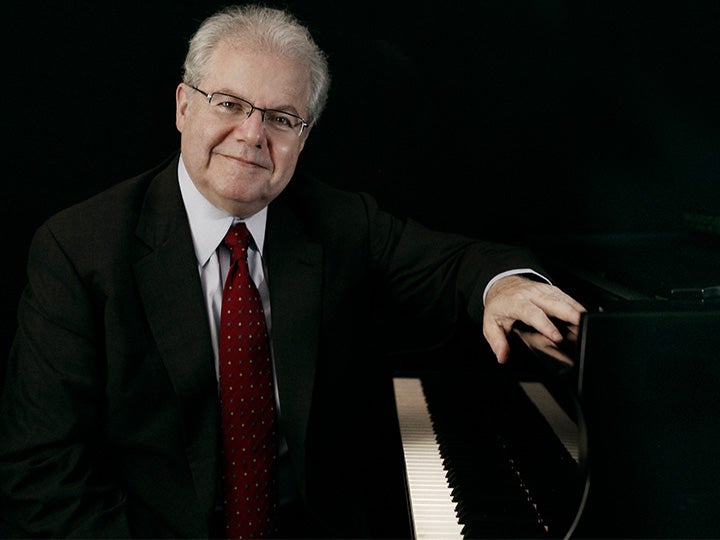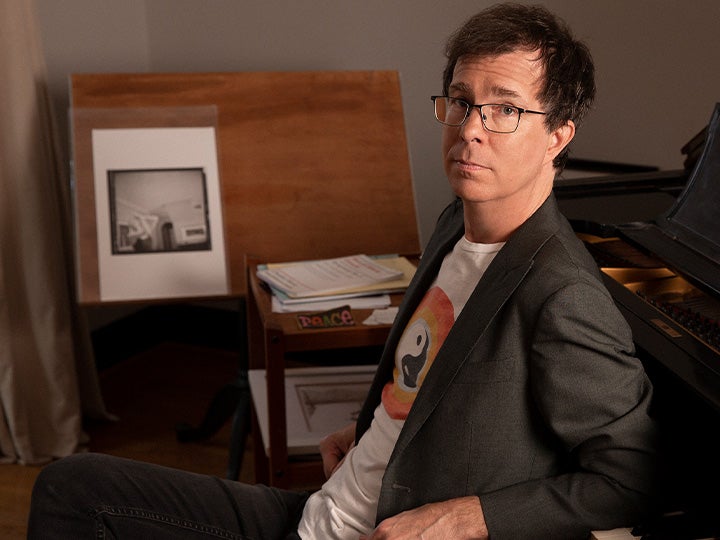The Firebird with Xian Zhang
Featuring Nimbus Dance and new dance choreography! | New Jersey Symphony Classical
Xian Zhang conductor
Jonathan Spitz cello
Nimbus Dance | Samuel Pott, artistic director & choreographer
New Jersey Symphony
- Johann Sebastian Bach Prelude from Cello Suite No. 2
Behold the majesty and wonder of solo Bach, as Principal Cello Jonathan Spitz spins this mesmerizing theme from thin air.
- Caroline Shaw Valencia
The valencia orange, described as “a thing of nature, yet so complex and extraordinary” inspired this expertly-crafted spring quartet.
- Qasim Naqvi God Docks at Death Harbor (Piano Quintet Version)
Naqvi calls this piece “a vision of our planet years from now … the quiet and peacefulness of a world restoring itself.” Nimbus Dance joins with brand new choreography, titled “Dark Water.”
- Igor Stravinsky Divertimento from The Fairy’s Kiss
Stravinsky loved the Romantics like Tchaikovsky, and created this charming and lilting Divertimento after him.
- Igor Stravinsky Suite from The Firebird
Stravinsky's The Firebird has one of the most exciting finales in all classical music, brought to life here with Nimbus Dance at center stage for the Newark concerts. In a dramatic and inventive departure from traditional renditions, Samuel Pott and Nimbus Dance reimagine The Firebird blending myth and modernity. In this tale, an Icarus-like figure, and a girl from a family in turmoil, seek freedom and liberation through flight.
Performed in Newark and Red Bank
The Firebird with Xian Zhang
Featuring Nimbus Dance and new dance choreography! | New Jersey Symphony Classical
Xian Zhang conductor
Jonathan Spitz cello
Nimbus Dance | Samuel Pott, artistic director & choreographer
New Jersey Symphony
- Johann Sebastian Bach Prelude from Cello Suite No. 2
Behold the majesty and wonder of solo Bach, as Principal Cello Jonathan Spitz spins this mesmerizing theme from thin air.
- Caroline Shaw Valencia
The valencia orange, described as “a thing of nature, yet so complex and extraordinary” inspired this expertly-crafted spring quartet.
- Qasim Naqvi God Docks at Death Harbor (Piano Quintet Version)
Naqvi calls this piece “a vision of our planet years from now … the quiet and peacefulness of a world restoring itself.” Nimbus Dance joins with brand new choreography, titled “Dark Water.”
- Igor Stravinsky Divertimento from The Fairy’s Kiss
Stravinsky loved the Romantics like Tchaikovsky, and created this charming and lilting Divertimento after him.
- Igor Stravinsky Suite from The Firebird
Stravinsky's The Firebird has one of the most exciting finales in all classical music, brought to life here with Nimbus Dance at center stage for the Newark concerts. In a dramatic and inventive departure from traditional renditions, Samuel Pott and Nimbus Dance reimagine The Firebird blending myth and modernity. In this tale, an Icarus-like figure, and a girl from a family in turmoil, seek freedom and liberation through flight.
Performed in Newark and Red Bank
The Firebird with Xian Zhang
Featuring Nimbus Dance and new dance choreography! | New Jersey Symphony Classical
Xian Zhang conductor
Jonathan Spitz cello
Nimbus Dance | Samuel Pott, artistic director & choreographer
New Jersey Symphony
- Johann Sebastian Bach Prelude from Cello Suite No. 2
Behold the majesty and wonder of solo Bach, as Principal Cello Jonathan Spitz spins this mesmerizing theme from thin air.
- Caroline Shaw Valencia
The valencia orange, described as “a thing of nature, yet so complex and extraordinary” inspired this expertly-crafted spring quartet.
- Qasim Naqvi God Docks at Death Harbor (Piano Quintet Version)
Naqvi calls this piece “a vision of our planet years from now … the quiet and peacefulness of a world restoring itself.” Nimbus Dance joins with brand new choreography, titled “Dark Water.”
- Igor Stravinsky Divertimento from The Fairy’s Kiss
Stravinsky loved the Romantics like Tchaikovsky, and created this charming and lilting Divertimento after him.
- Igor Stravinsky Suite from The Firebird
Stravinsky's The Firebird has one of the most exciting finales in all classical music, brought to life here with Nimbus Dance at center stage for the Newark concerts. In a dramatic and inventive departure from traditional renditions, Samuel Pott and Nimbus Dance reimagine The Firebird blending myth and modernity. In this tale, an Icarus-like figure, and a girl from a family in turmoil, seek freedom and liberation through flight.
Performed in Newark and Red Bank
Rachmaninoff Symphony No. 2
New Jersey Symphony Classical
Xian Zhang conductor
Gregory D. McDaniel conductor
Adam Tendler piano
New Jersey Symphony
- Claude Debussy Clair de Lune
Debussy’s original piano solo, Clair de Lune, probably exists in more versions than the Beatles’ “Yesterday” and for good reason, as none before or since have captured in music the true magic of moonlight.
- Nico Muhly Sounding for Piano and Orchestra (New Jersey Symphony Co-Commission)
New York-based pianist Adam Tendler, “currently the hottest pianist on the American contemporary classical scene” (Minneapolis Star Tribune), makes his New Jersey Symphony debut in this hymn tune-filled concerto by broadly popular contemporary composer Nico Muhly.
- Sergei Rachmaninoff Symphony No. 2
Melodies too numerous and beautiful to track—so don’t try. Just let this sweeping Romantic symphony, the inspiration for the song “Never Gonna Fall in Love Again,” work its magic.
Performed in Newark, Princeton and Morristown
Rachmaninoff Symphony No. 2
New Jersey Symphony Classical
Xian Zhang conductor
Gregory D. McDaniel conductor
Adam Tendler piano
New Jersey Symphony
- Claude Debussy Clair de Lune
Debussy’s original piano solo, Clair de Lune, probably exists in more versions than the Beatles’ “Yesterday” and for good reason, as none before or since have captured in music the true magic of moonlight.
- Nico Muhly Sounding for Piano and Orchestra (New Jersey Symphony Co-Commission)
New York-based pianist Adam Tendler, “currently the hottest pianist on the American contemporary classical scene” (Minneapolis Star Tribune), makes his New Jersey Symphony debut in this hymn tune-filled concerto by broadly popular contemporary composer Nico Muhly.
- Sergei Rachmaninoff Symphony No. 2
Melodies too numerous and beautiful to track—so don’t try. Just let this sweeping Romantic symphony, the inspiration for the song “Never Gonna Fall in Love Again,” work its magic.
Performed in Newark, Princeton and Morristown
Rachmaninoff Symphony No. 2
New Jersey Symphony Classical
Xian Zhang conductor
Gregory D. McDaniel conductor
Adam Tendler piano
New Jersey Symphony
- Claude Debussy Clair de Lune
Debussy’s original piano solo, Clair de Lune, probably exists in more versions than the Beatles’ “Yesterday” and for good reason, as none before or since have captured in music the true magic of moonlight.
- Nico Muhly Sounding for Piano and Orchestra (New Jersey Symphony Co-Commission)
New York-based pianist Adam Tendler, “currently the hottest pianist on the American contemporary classical scene” (Minneapolis Star Tribune), makes his New Jersey Symphony debut in this hymn tune-filled concerto by broadly popular contemporary composer Nico Muhly.
- Sergei Rachmaninoff Symphony No. 2
Melodies too numerous and beautiful to track—so don’t try. Just let this sweeping Romantic symphony, the inspiration for the song “Never Gonna Fall in Love Again,” work its magic.
Performed in Newark, Princeton and Morristown
Rachmaninoff Symphony No. 2
New Jersey Symphony Classical
Xian Zhang conductor
Gregory D. McDaniel conductor
Adam Tendler piano
New Jersey Symphony
- Claude Debussy Clair de Lune
Debussy’s original piano solo, Clair de Lune, probably exists in more versions than the Beatles’ “Yesterday” and for good reason, as none before or since have captured in music the true magic of moonlight.
- Nico Muhly Sounding for Piano and Orchestra (New Jersey Symphony Co-Commission)
New York-based pianist Adam Tendler, “currently the hottest pianist on the American contemporary classical scene” (Minneapolis Star Tribune), makes his New Jersey Symphony debut in this hymn tune-filled concerto by broadly popular contemporary composer Nico Muhly.
- Sergei Rachmaninoff Symphony No. 2
Melodies too numerous and beautiful to track—so don’t try. Just let this sweeping Romantic symphony, the inspiration for the song “Never Gonna Fall in Love Again,” work its magic.
Performed in Newark, Princeton and Morristown
Brahms Violin Concerto with Vadim Gluzman
New Jersey Symphony Classical
Lina González-Granados conductor
Vadim Gluzman violin
New Jersey Symphony
- Robert Schumann Overture, Scherzo and Finale
Bursting with a love of life in the months after his marriage to Clara, Robert Schumann created three fantastic movements–one shy of a full symphony but which stand magnificently on their own.
- Gabriela Ortiz Clara
A fascinating depiction of the 19th-century composer-pianist Clara Schumann’s inner life as imagined by one of Mexico's leading contemporary composers.
- Johannes Brahms Violin Concerto
A favorite of New Jersey Symphony audiences, Vadim Gluzman returns with his signature singing tone to play what Brahms began as simply “a few violin passages,” but turned into one of the greatest of all concertos.
Performed in New Brunswick, Red Bank and Newark
Brahms Violin Concerto with Vadim Gluzman
New Jersey Symphony Classical
Lina González-Granados conductor
Vadim Gluzman violin
New Jersey Symphony
- Robert Schumann Overture, Scherzo and Finale
Bursting with a love of life in the months after his marriage to Clara, Robert Schumann created three fantastic movements–one shy of a full symphony but which stand magnificently on their own.
- Gabriela Ortiz Clara
A fascinating depiction of the 19th-century composer-pianist Clara Schumann’s inner life as imagined by one of Mexico's leading contemporary composers.
- Johannes Brahms Violin Concerto
A favorite of New Jersey Symphony audiences, Vadim Gluzman returns with his signature singing tone to play what Brahms began as simply “a few violin passages,” but turned into one of the greatest of all concertos.
Performed in New Brunswick, Red Bank and Newark
Brahms Violin Concerto with Vadim Gluzman
New Jersey Symphony Classical
Lina González-Granados conductor
Vadim Gluzman violin
New Jersey Symphony
- Robert Schumann Overture, Scherzo and Finale
Bursting with a love of life in the months after his marriage to Clara, Robert Schumann created three fantastic movements–one shy of a full symphony but which stand magnificently on their own.
- Gabriela Ortiz Clara
A fascinating depiction of the 19th-century composer-pianist Clara Schumann’s inner life as imagined by one of Mexico's leading contemporary composers.
- Johannes Brahms Violin Concerto
A favorite of New Jersey Symphony audiences, Vadim Gluzman returns with his signature singing tone to play what Brahms began as simply “a few violin passages,” but turned into one of the greatest of all concertos.
Performed in New Brunswick, Red Bank and Newark
Beethoven’s Ninth Symphony with Xian Zhang
New Jersey Symphony Classical
Xian Zhang conductor
Gregory D. McDaniel conductor
Steven Banks saxophone
Felicia Moore soprano
Kelley O’Connor mezzo-soprano
Issachah Savage tenor
Reginald Smith Jr. baritone
Montclair State University Chorale | Heather J. Buchanan, director
New Jersey Symphony
- Pytor Ilyich Tchaikovsky Polonaise from Eugene Onegin
A lavish ball scene, the dashing hero and heroine twirling in splendor—a fun, festive dance lifted from Tchaikovsky’s opera.
- Billy Childs Diaspora
Inspired by Maya Angelou and other poets, Childs’ new concerto was written for the amazing Steven Banks, who says the music “follows the trajectory of the Black experience from Africa before slave trade to now, going forward in hope.”
- Ludwig van Beethoven Symphony No. 9, “Choral”
The sheer volcanic power of Beethoven’s music makes the Ninth’s message soar. “Brotherhood! Joy!”—our world needs these clarion calls now more than ever.
Performed in Newark and New Brunswick
Beethoven’s Ninth Symphony with Xian Zhang
New Jersey Symphony Classical
Xian Zhang conductor
Gregory D. McDaniel conductor
Steven Banks saxophone
Felicia Moore soprano
Kelley O’Connor mezzo-soprano
Issachah Savage tenor
Reginald Smith Jr. baritone
Montclair State University Chorale | Heather J. Buchanan, director
New Jersey Symphony
- Pytor Ilyich Tchaikovsky Polonaise from Eugene Onegin
A lavish ball scene, the dashing hero and heroine twirling in splendor—a fun, festive dance lifted from Tchaikovsky’s opera.
- Billy Childs Diaspora
Inspired by Maya Angelou and other poets, Childs’ new concerto was written for the amazing Steven Banks, who says the music “follows the trajectory of the Black experience from Africa before slave trade to now, going forward in hope.”
- Ludwig van Beethoven Symphony No. 9, “Choral”
The sheer volcanic power of Beethoven’s music makes the Ninth’s message soar. “Brotherhood! Joy!”—our world needs these clarion calls now more than ever.
Performed in Newark and New Brunswick
Beethoven’s Ninth Symphony with Xian Zhang
New Jersey Symphony Classical
Xian Zhang conductor
Gregory D. McDaniel conductor
Steven Banks saxophone
Felicia Moore soprano
Kelley O’Connor mezzo-soprano
Issachah Savage tenor
Reginald Smith Jr. baritone
Montclair State University Chorale | Heather J. Buchanan, director
New Jersey Symphony
- Pytor Ilyich Tchaikovsky Polonaise from Eugene Onegin
A lavish ball scene, the dashing hero and heroine twirling in splendor—a fun, festive dance lifted from Tchaikovsky’s opera.
- Billy Childs Diaspora
Inspired by Maya Angelou and other poets, Childs’ new concerto was written for the amazing Steven Banks, who says the music “follows the trajectory of the Black experience from Africa before slave trade to now, going forward in hope.”
- Ludwig van Beethoven Symphony No. 9, “Choral”
The sheer volcanic power of Beethoven’s music makes the Ninth’s message soar. “Brotherhood! Joy!”—our world needs these clarion calls now more than ever.
Performed in Newark and New Brunswick
Beethoven’s Ninth Symphony with Xian Zhang
New Jersey Symphony Classical
Xian Zhang conductor
Gregory D. McDaniel conductor
Steven Banks saxophone
Felicia Moore soprano
Kelley O’Connor mezzo-soprano
Issachah Savage tenor
Reginald Smith Jr. baritone
Montclair State University Chorale | Heather J. Buchanan, director
New Jersey Symphony
- Pytor Ilyich Tchaikovsky Polonaise from Eugene Onegin
A lavish ball scene, the dashing hero and heroine twirling in splendor—a fun, festive dance lifted from Tchaikovsky’s opera.
- Billy Childs Diaspora
Inspired by Maya Angelou and other poets, Childs’ new concerto was written for the amazing Steven Banks, who says the music “follows the trajectory of the Black experience from Africa before slave trade to now, going forward in hope.”
- Ludwig van Beethoven Symphony No. 9, “Choral”
The sheer volcanic power of Beethoven’s music makes the Ninth’s message soar. “Brotherhood! Joy!”—our world needs these clarion calls now more than ever.
Performed in Newark and New Brunswick
Star Wars: The Force Awakens in Concert
New Jersey Symphony at the Movies
Constantine Kitsopoulos conductor
New Jersey Symphony
Thirty years after the defeat of the Empire, Luke Skywalker has vanished, and a new threat has risen: The First Order, led by the mysterious Supreme Leader Snoke and his enforcer, Kylo Ren. General Leia Organa’s military force, the Resistance—and unlikely heroes brought together by fate—are the galaxy’s only hope. Experience the complete film with the New Jersey Symphony performing John Williams’ thrilling score live.
Performed in Red Bank, Morristown, Newark and New Brunswick
Star Wars: The Force Awakens in Concert
New Jersey Symphony at the Movies
Constantine Kitsopoulos conductor
New Jersey Symphony
Thirty years after the defeat of the Empire, Luke Skywalker has vanished, and a new threat has risen: The First Order, led by the mysterious Supreme Leader Snoke and his enforcer, Kylo Ren. General Leia Organa’s military force, the Resistance—and unlikely heroes brought together by fate—are the galaxy’s only hope. Experience the complete film with the New Jersey Symphony performing John Williams’ thrilling score live.
Performed in Red Bank, Morristown, Newark and New Brunswick
Star Wars: The Force Awakens in Concert
New Jersey Symphony at the Movies
Constantine Kitsopoulos conductor
New Jersey Symphony
Thirty years after the defeat of the Empire, Luke Skywalker has vanished, and a new threat has risen: The First Order, led by the mysterious Supreme Leader Snoke and his enforcer, Kylo Ren. General Leia Organa’s military force, the Resistance—and unlikely heroes brought together by fate—are the galaxy’s only hope. Experience the complete film with the New Jersey Symphony performing John Williams’ thrilling score live.
Performed in Red Bank, Morristown, Newark and New Brunswick
Star Wars: The Force Awakens in Concert
New Jersey Symphony at the Movies
Constantine Kitsopoulos conductor
New Jersey Symphony
Thirty years after the defeat of the Empire, Luke Skywalker has vanished, and a new threat has risen: The First Order, led by the mysterious Supreme Leader Snoke and his enforcer, Kylo Ren. General Leia Organa’s military force, the Resistance—and unlikely heroes brought together by fate—are the galaxy’s only hope. Experience the complete film with the New Jersey Symphony performing John Williams’ thrilling score live.
Performed in Red Bank, Morristown, Newark and New Brunswick
Youth Orchestra Spring Concert
Two performances in one day! | Youth Orchestra Showcase
Diego García artistic director, The Anna P. Drago Chair
Terrence Thornhill associate conductor & curriculum specialist
New Jersey Symphony Youth Orchestra, The Resident Youth Orchestra of the John J. Cali School of Music at Montclair State University
The New Jersey Symphony Youth Orchestra will showcase 300 talented young musicians across two performances as part of their annual Spring Concert on Sunday, April 27 in Newark. Experience vibrant performances and celebrate the achievements of the 2024–25 season, including a special tribute to the graduating seniors.
Performed in Newark
Youth Orchestra Spring Concert
Two performances in one day! | Youth Orchestra Showcase
Diego García artistic director, The Anna P. Drago Chair
Terrence Thornhill associate conductor & curriculum specialist
New Jersey Symphony Youth Orchestra, The Resident Youth Orchestra of the John J. Cali School of Music at Montclair State University
The New Jersey Symphony Youth Orchestra will showcase 300 talented young musicians across two performances as part of their annual Spring Concert on Sunday, April 27 in Newark. Experience vibrant performances and celebrate the achievements of the 2024–25 season, including a special tribute to the graduating seniors.
Performed in Newark
Haydn’s Creation
New Jersey Symphony at the Cathedral
John J. Miller conductor
Lorraine Ernest soprano
Theodore Chletsos tenor
Jorge Ocasio bass-baritone
The Archdiocesan Festival Choir
The Cathedral Choir
New Jersey Symphony
The Cathedral Basilica of the Sacred Heart in Newark, NJ invites all to experience the music of Franz Joseph Haydn’s The Creation, featuring The Archdiocesan Festival Choir, The Cathedral Choir, vocal soloists and the New Jersey Symphony with John J. Miller conducting.
Performed in Newark
The Music of Led Zeppelin
Featuring hits like “Kashmir,” “Black Dog,” “Stairway to Heaven” and more!
Brent Havens conductor & arranger
Windborne Music Group
Justin Sargent vocalist
New Jersey Symphony
The New Jersey Symphony and Windborne Music Group bridge the gulf between classical music and rock n’ roll to present The Music of Led Zeppelin, celebrating the best of the legendary classic rock group. Amplified with full-on guitars and screaming vocals, sing and dance along as Led Zeppelin’s “sheer blast and power” is put on full display riff for riff with new musical colors. Timeless hits like “Kashmir,” “Black Dog,” “Stairway to Heaven” and more will get you on your feet in this special concert you don’t want to miss!
Performed in Englewood and New Brunswick
The Music of Led Zeppelin
Featuring hits like “Kashmir,” “Black Dog,” “Stairway to Heaven” and more!
Brent Havens conductor & arranger
Windborne Music Group
Justin Sargent vocalist
New Jersey Symphony
The New Jersey Symphony and Windborne Music Group bridge the gulf between classical music and rock n’ roll to present The Music of Led Zeppelin, celebrating the best of the legendary classic rock group. Amplified with full-on guitars and screaming vocals, sing and dance along as Led Zeppelin’s “sheer blast and power” is put on full display riff for riff with new musical colors. Timeless hits like “Kashmir,” “Black Dog,” “Stairway to Heaven” and more will get you on your feet in this special concert you don’t want to miss!
Performed in Englewood and New Brunswick
Xian Conducts Mozart
New Jersey Symphony musicians take the spotlight!
Xian Zhang conductor
Eric Wyrick violin
Francine Storck violin
New Jersey Symphony
- Wolfgang Amadeus Mozart Eine kleine Nachtmusik
Mozart may have tossed this off for a Viennese party one evening, but there is no piece more charming and beguiling than his “a little night music.”
- Johann Sebastian Bach Double Concerto for Two Violins
The spotlight’s on our two superstar principal violins, Eric Wyrick and Francine Storck, in perhaps the most beautiful duet ever created.
- Michael Abels Delights and Dances
Delight in this imaginative, bluesy work for solo string quartet and string orchestra, with New Jersey Symphony’s own musicians taking the spotlight in a series of captivating solos.
- Wolfgang Amadeus Mozart Symphony No. 35, “Haffner”
Mozart had intended to jot down a little occasional piece, but brilliant music kept pouring out of his pen until he’d made a dazzling full-fledged symphony, one of his best.
Performed in Princeton and Newark
Discover Mozart & Bach
New Jersey Symphony Family Concert:
A Music Discovery Zone
Xian Zhang conductor
Gregory D. McDaniel conductor
Bill Barclay host
Eric Wyrick violin
Francine Storck violin
Annamaria Witek cello
New Jersey Symphony
Discover what makes a live orchestra concert so special. We’ll take a deep dive into works by Mozart, as well as J.S. Bach’s incredibly famous Double Concerto for Two Violins. Also featured on the program is 2024 Henry Lewis Concerto Competition winner, cellist Annamaria Witek. Inspired by Leonard Bernstein’s masterful way of putting young audiences at the center of music-making, this interactive concert will feature inside tips, listening cues and fun facts that make for the perfect Saturday afternoon family outing!
- Wolfgang Amadeus Mozart Selection from Eine kleine Nachtmusik
- Camille Saint-Saëns Selection from Cello Concerto No. 1
- Johann Sebastian Bach Double Concerto for Two Violins
- Wolfgang Amadeus Mozart Symphony No. 35, “Haffner”
Performed in Newark
Xian Conducts Mozart
New Jersey Symphony musicians take the spotlight!
Xian Zhang conductor
Eric Wyrick violin
Francine Storck violin
New Jersey Symphony
- Wolfgang Amadeus Mozart Eine kleine Nachtmusik
Mozart may have tossed this off for a Viennese party one evening, but there is no piece more charming and beguiling than his “a little night music.”
- Johann Sebastian Bach Double Concerto for Two Violins
The spotlight’s on our two superstar principal violins, Eric Wyrick and Francine Storck, in perhaps the most beautiful duet ever created.
- Michael Abels Delights and Dances
Delight in this imaginative, bluesy work for solo string quartet and string orchestra, with New Jersey Symphony’s own musicians taking the spotlight in a series of captivating solos.
- Wolfgang Amadeus Mozart Symphony No. 35, “Haffner”
Mozart had intended to jot down a little occasional piece, but brilliant music kept pouring out of his pen until he’d made a dazzling full-fledged symphony, one of his best.
Performed in Princeton and Newark
Xian Conducts Mozart
New Jersey Symphony musicians take the spotlight!
Xian Zhang conductor
Eric Wyrick violin
Francine Storck violin
New Jersey Symphony
- Wolfgang Amadeus Mozart Eine kleine Nachtmusik
Mozart may have tossed this off for a Viennese party one evening, but there is no piece more charming and beguiling than his “a little night music.”
- Johann Sebastian Bach Double Concerto for Two Violins
The spotlight’s on our two superstar principal violins, Eric Wyrick and Francine Storck, in perhaps the most beautiful duet ever created.
- Michael Abels Delights and Dances
Delight in this imaginative, bluesy work for solo string quartet and string orchestra, with New Jersey Symphony’s own musicians taking the spotlight in a series of captivating solos.
- Wolfgang Amadeus Mozart Symphony No. 35, “Haffner”
Mozart had intended to jot down a little occasional piece, but brilliant music kept pouring out of his pen until he’d made a dazzling full-fledged symphony, one of his best.
Performed in Princeton and Newark
2025 Spring into Music Gala & Auction
Gala Reception and Dinner, Concert and Auction
Join the New Jersey Symphony and an array of cultural, social, business and civic leaders for an unforgettable evening of fine dining and entertainment as we honor former Governor Thomas H. Kean and his dedication to the performing arts industry in New Jersey. The event will feature a lavish cocktail reception with a few dazzling surprises, a dinner with a private performance featuring members of the New Jersey Symphony and students of the New Jersey Symphony Youth Orchestra and a silent auction.
Presented in West Orange
Rachmaninoff and Shostakovich
Season Finale | New Jersey Symphony Classical
Xian Zhang conductor
Conrad Tao piano
New Jersey Symphony
- Sergei Rachmaninoff Piano Concerto No. 2
No piece has introduced and won more people to classical music than Rachmaninoff’s magnificent work for piano and orchestra.
- Dmitri Shostakovich Symphony No. 5
When Shostakovich’s Fifth received a half-hour standing ovation at its premiere, the world knew that a classic was born—and it remains a landmark work for the virtuoso orchestra.
Performed in Morristown, Princeton, Red Bank and Newark
Rachmaninoff and Shostakovich
Season Finale | New Jersey Symphony Classical
Xian Zhang conductor
Conrad Tao piano
New Jersey Symphony
- Sergei Rachmaninoff Piano Concerto No. 2
No piece has introduced and won more people to classical music than Rachmaninoff’s magnificent work for piano and orchestra.
- Dmitri Shostakovich Symphony No. 5
When Shostakovich’s Fifth received a half-hour standing ovation at its premiere, the world knew that a classic was born—and it remains a landmark work for the virtuoso orchestra.
Performed in Morristown, Princeton, Red Bank and Newark
Rachmaninoff and Shostakovich
Season Finale | New Jersey Symphony Classical
Xian Zhang conductor
Conrad Tao piano
New Jersey Symphony
- Sergei Rachmaninoff Piano Concerto No. 2
No piece has introduced and won more people to classical music than Rachmaninoff’s magnificent work for piano and orchestra.
- Dmitri Shostakovich Symphony No. 5
When Shostakovich’s Fifth received a half-hour standing ovation at its premiere, the world knew that a classic was born—and it remains a landmark work for the virtuoso orchestra.
Performed in Morristown, Princeton, Red Bank and Newark
Rachmaninoff and Shostakovich
Season Finale | New Jersey Symphony Classical
Xian Zhang conductor
Conrad Tao piano
New Jersey Symphony
- Sergei Rachmaninoff Piano Concerto No. 2
No piece has introduced and won more people to classical music than Rachmaninoff’s magnificent work for piano and orchestra.
- Dmitri Shostakovich Symphony No. 5
When Shostakovich’s Fifth received a half-hour standing ovation at its premiere, the world knew that a classic was born—and it remains a landmark work for the virtuoso orchestra.
Performed in Morristown, Princeton, Red Bank and Newark
How to Train Your Dragon in Concert
New Jersey Symphony at the Movies
Lawrence Loh conductor
New Jersey Symphony
DreamWorks’ How to Train Your Dragon is a captivating and original story about a young Viking named Hiccup, who defies tradition when he befriends one of his deadliest foes—a ferocious dragon he calls Toothless. Together, these unlikely heroes must fight against all odds to save both their worlds. Featuring John Powell’s Oscar-nominated score performed live to picture, How to Train Your Dragon in Concert is a thrilling experience for all ages.
Performed in Morristown, New Brunswick and Newark
How to Train Your Dragon in Concert
New Jersey Symphony at the Movies
Lawrence Loh conductor
New Jersey Symphony
DreamWorks’ How to Train Your Dragon is a captivating and original story about a young Viking named Hiccup, who defies tradition when he befriends one of his deadliest foes—a ferocious dragon he calls Toothless. Together, these unlikely heroes must fight against all odds to save both their worlds. Featuring John Powell’s Oscar-nominated score performed live to picture, How to Train Your Dragon in Concert is a thrilling experience for all ages.
Performed in Morristown, New Brunswick and Newark
How to Train Your Dragon in Concert
New Jersey Symphony at the Movies
Lawrence Loh conductor
New Jersey Symphony
DreamWorks’ How to Train Your Dragon is a captivating and original story about a young Viking named Hiccup, who defies tradition when he befriends one of his deadliest foes—a ferocious dragon he calls Toothless. Together, these unlikely heroes must fight against all odds to save both their worlds. Featuring John Powell’s Oscar-nominated score performed live to picture, How to Train Your Dragon in Concert is a thrilling experience for all ages.
Performed in Morristown, New Brunswick and Newark
TwoSet Violin with the New Jersey Symphony
Part of the TwoSet Violin World Tour
TwoSet Violin
New Jersey Symphony
World-famous YouTube classical music comedy duo TwoSet Violin take the stage with the New Jersey Symphony for a wide-ranging night of musical fun! Violinists Eddy Chen and Brett Yang will take their unique brand of earnest and silly musical comedy to a new level in this performance, with the backing of a full symphony orchestra.
Performed in Newark
Opening Night Celebration
Dinner Prelude, Concert and After-Party
You are invited to the New Jersey Symphony’s 2025 Season Opening Celebration honoring Xian Zhang’s 10th season as Music Director. Guests will enjoy an elegant dinner prelude, the season opening concert featuring Music Director Xian Zhang, guest artist Joyce Yang and the New Jersey Symphony and a dessert after-party.
Presented in Newark
Tchaikovsky’s Piano Concerto No. 1
Opening Weekend | New Jersey Symphony Classical
Xian Zhang conductor
Joyce Yang piano
New Jersey Symphony
- Jessie Montgomery Hymn for Everyone
We launch the season with Montgomery’s open-arms musical welcome. In her Hymn for Everyone you’ll hear an echo of “Lift Every Voice and Sing,” often called the Black National Anthem.
- Pyotr Ilyich Tchaikovsky Piano Concerto No. 1
Slammed as a flop at its premiere, Tchaikovsky more than had the last laugh: here’s jaw-dropping virtuosity for the soloist, sweeping melodies for the orchestra, and an audience favorite around the world.
- Antonín Dvořák Symphony No. 8
Dvořák’s pen might as well have been a paint brush. In his tuneful Eighth you can practically see autumn’s most vivid colors and the heart-melting glow of an October sunset.
Performed in Newark and Red Bank
Tchaikovsky’s Piano Concerto No. 1
Opening Weekend | New Jersey Symphony Classical
Xian Zhang conductor
Joyce Yang piano
New Jersey Symphony
- Jessie Montgomery Hymn for Everyone
We launch the season with Montgomery’s open-arms musical welcome. In her Hymn for Everyone you’ll hear an echo of “Lift Every Voice and Sing,” often called the Black National Anthem.
- Pyotr Ilyich Tchaikovsky Piano Concerto No. 1
Slammed as a flop at its premiere, Tchaikovsky more than had the last laugh: here’s jaw-dropping virtuosity for the soloist, sweeping melodies for the orchestra, and an audience favorite around the world.
- Antonín Dvořák Symphony No. 8
Dvořák’s pen might as well have been a paint brush. In his tuneful Eighth you can practically see autumn’s most vivid colors and the heart-melting glow of an October sunset.
Performed in Newark and Red Bank
Tchaikovsky’s Piano Concerto No. 1
Opening Weekend | New Jersey Symphony Classical
Xian Zhang conductor
Joyce Yang piano
New Jersey Symphony
- Jessie Montgomery Hymn for Everyone
We launch the season with Montgomery’s open-arms musical welcome. In her Hymn for Everyone you’ll hear an echo of “Lift Every Voice and Sing,” often called the Black National Anthem.
- Pyotr Ilyich Tchaikovsky Piano Concerto No. 1
Slammed as a flop at its premiere, Tchaikovsky more than had the last laugh: here’s jaw-dropping virtuosity for the soloist, sweeping melodies for the orchestra, and an audience favorite around the world.
- Antonín Dvořák Symphony No. 8
Dvořák’s pen might as well have been a paint brush. In his tuneful Eighth you can practically see autumn’s most vivid colors and the heart-melting glow of an October sunset.
Performed in Newark and Red Bank
Disney’s Fantasia in Concert
New Jersey Symphony at the Movies
Constantine Kitsopoulos conductor
New Jersey Symphony
Experience Disney’s groundbreaking marriage of symphonic music and animation, Fantasia. Beloved repertoire from the original 1940 version and Fantasia 2000, including The Sorcerer’s Apprentice, Beethoven’s Fifth Symphony, and The Nutcracker Suite, will be performed by the New Jersey Symphony while Disney’s stunning footage is shown on the big screen. Enjoy iconic moments and childhood favorites like never before!
Performed in Morristown, Red Bank and New Brunswick
Disney’s Fantasia in Concert
New Jersey Symphony at the Movies
Constantine Kitsopoulos conductor
New Jersey Symphony
Experience Disney’s groundbreaking marriage of symphonic music and animation, Fantasia. Beloved repertoire from the original 1940 version and Fantasia 2000, including The Sorcerer’s Apprentice, Beethoven’s Fifth Symphony, and The Nutcracker Suite, will be performed by the New Jersey Symphony while Disney’s stunning footage is shown on the big screen. Enjoy iconic moments and childhood favorites like never before!
Performed in Morristown, Red Bank and New Brunswick
Disney’s Fantasia in Concert
New Jersey Symphony at the Movies
Constantine Kitsopoulos conductor
New Jersey Symphony
Experience Disney’s groundbreaking marriage of symphonic music and animation, Fantasia. Beloved repertoire from the original 1940 version and Fantasia 2000, including The Sorcerer’s Apprentice, Beethoven’s Fifth Symphony, and The Nutcracker Suite, will be performed by the New Jersey Symphony while Disney’s stunning footage is shown on the big screen. Enjoy iconic moments and childhood favorites like never before!
Performed in Morristown, Red Bank and New Brunswick
Rhapsody in Blue
Plus works by Florence Price & Carlos Simon!
Tito Muñoz conductor
Michelle Cann piano
New Jersey Symphony
- Florence Price Piano Concerto in One Movement
An American genius, Florence Price mixes luscious lyricism with ragtime stomp. This recently unearthed gem won Cann—the leading interpreter of Price’s piano music—a 2023 GRAMMY.
- George Gershwin Rhapsody in Blue
United Airlines knows a good tune when it hears one, and that melody is the heartbeat of Gershwin’s classic. But not before the famous swooping clarinet solo gets this piece of the Roaring Twenties underway.
- Carlos Simon Zodiac (Northeast Premiere, New Jersey Symphony Co-Commission)
Carlos Simon is one of America’s leading contemporary composers, and in his latest music, a proud co-commission of the New Jersey Symphony, Simon gives voice to all 12 zodiac signs—the music at turns fiery, ethereal, and soaring.
- Aaron Copland Suite from Billy the Kid
Cowboy songs, folk tunes, and a visionary composer—all the ingredients that made Copland’s wild-west ballet a hit in the ‘30s and a favorite still.
Performed in Newark, Princeton and New Brunswick
Rhapsody in Blue
Plus works by Florence Price & Carlos Simon!
Tito Muñoz conductor
Michelle Cann piano
New Jersey Symphony
- Florence Price Piano Concerto in One Movement
An American genius, Florence Price mixes luscious lyricism with ragtime stomp. This recently unearthed gem won Cann—the leading interpreter of Price’s piano music—a 2023 GRAMMY.
- George Gershwin Rhapsody in Blue
United Airlines knows a good tune when it hears one, and that melody is the heartbeat of Gershwin’s classic. But not before the famous swooping clarinet solo gets this piece of the Roaring Twenties underway.
- Carlos Simon Zodiac (Northeast Premiere, New Jersey Symphony Co-Commission)
Carlos Simon is one of America’s leading contemporary composers, and in his latest music, a proud co-commission of the New Jersey Symphony, Simon gives voice to all 12 zodiac signs—the music at turns fiery, ethereal, and soaring.
- Aaron Copland Suite from Billy the Kid
Cowboy songs, folk tunes, and a visionary composer—all the ingredients that made Copland’s wild-west ballet a hit in the ‘30s and a favorite still.
Performed in Newark, Princeton and New Brunswick
Discover Rhapsody
in Blue
New Jersey Symphony Family Concert
Tito Muñoz conductor
Michelle Cann piano
New Jersey Symphony
Discover what makes a live orchestra concert so special. We’ll take a deep dive into one of the greatest American piano concertos, Gershwin’s Rhapsody in Blue, followed by Copland’s lively Suite from Billy the Kid.
Performed in Newark
Rhapsody in Blue
Plus works by Florence Price & Carlos Simon!
Tito Muñoz conductor
Michelle Cann piano
New Jersey Symphony
- Florence Price Piano Concerto in One Movement
An American genius, Florence Price mixes luscious lyricism with ragtime stomp. This recently unearthed gem won Cann—the leading interpreter of Price’s piano music—a 2023 GRAMMY.
- George Gershwin Rhapsody in Blue
United Airlines knows a good tune when it hears one, and that melody is the heartbeat of Gershwin’s classic. But not before the famous swooping clarinet solo gets this piece of the Roaring Twenties underway.
- Carlos Simon Zodiac (Northeast Premiere, New Jersey Symphony Co-Commission)
Carlos Simon is one of America’s leading contemporary composers, and in his latest music, a proud co-commission of the New Jersey Symphony, Simon gives voice to all 12 zodiac signs—the music at turns fiery, ethereal, and soaring.
- Aaron Copland Suite from Billy the Kid
Cowboy songs, folk tunes, and a visionary composer—all the ingredients that made Copland’s wild-west ballet a hit in the ‘30s and a favorite still.
Performed in Newark, Princeton and New Brunswick
Rhapsody in Blue
Plus works by Florence Price & Carlos Simon!
Tito Muñoz conductor
Michelle Cann piano
New Jersey Symphony
- Florence Price Piano Concerto in One Movement
An American genius, Florence Price mixes luscious lyricism with ragtime stomp. This recently unearthed gem won Cann—the leading interpreter of Price’s piano music—a 2023 GRAMMY.
- George Gershwin Rhapsody in Blue
United Airlines knows a good tune when it hears one, and that melody is the heartbeat of Gershwin’s classic. But not before the famous swooping clarinet solo gets this piece of the Roaring Twenties underway.
- Carlos Simon Zodiac (Northeast Premiere, New Jersey Symphony Co-Commission)
Carlos Simon is one of America’s leading contemporary composers, and in his latest music, a proud co-commission of the New Jersey Symphony, Simon gives voice to all 12 zodiac signs—the music at turns fiery, ethereal, and soaring.
- Aaron Copland Suite from Billy the Kid
Cowboy songs, folk tunes, and a visionary composer—all the ingredients that made Copland’s wild-west ballet a hit in the ‘30s and a favorite still.
Performed in Newark, Princeton and New Brunswick
Elf in Concert
New Jersey Symphony at the Movies
Conner Gray Covington conductor
New Jersey Symphony
Buddy was accidentally transported to the North Pole as a toddler and raised to adulthood among Santa’s elves. Unable to shake the feeling that he doesn’t fit in, the adult Buddy travels to New York, in full elf uniform, in search of his real father. This holiday season, relive this heartwarming holiday classic on a giant screen as every note of John Debney’s wonderful score is played live to picture in: Elf in Concert!
Performed in Newark and Red Bank
Elf in Concert
New Jersey Symphony at the Movies
Conner Gray Covington conductor
New Jersey Symphony
Buddy was accidentally transported to the North Pole as a toddler and raised to adulthood among Santa’s elves. Unable to shake the feeling that he doesn’t fit in, the adult Buddy travels to New York, in full elf uniform, in search of his real father. This holiday season, relive this heartwarming holiday classic on a giant screen as every note of John Debney’s wonderful score is played live to picture in: Elf in Concert!
Performed in Newark and Red Bank
Handel’s Messiah
New Jersey Symphony Holiday Tradition
Anthony Parnther conductor
Caitlin Gotimer soprano
Maria Dominique Lopez mezzo-soprano
Orson Van Gay II tenor
Shyheim Selvan Hinnant bass-baritone
Montclair State University Singers | Heather J. Buchanan, director
New Jersey Symphony
Handel’s Messiah embraces every emotion, from the first voice singing “Comfort ye,” inviting you to step aside from the season’s frenzy, to the riveting Amen Chorus at the end. In between are moments of transcendence, loss, and deeply-felt awe—what makes a classic a classic.
Performed in Princeton and Newark
Handel’s Messiah
New Jersey Symphony Holiday Tradition
Anthony Parnther conductor
Caitlin Gotimer soprano
Maria Dominique Lopez mezzo-soprano
Orson Van Gay II tenor
Shyheim Selvan Hinnant bass-baritone
Montclair State University Singers | Heather J. Buchanan, director
New Jersey Symphony
Handel’s Messiah embraces every emotion, from the first voice singing “Comfort ye,” inviting you to step aside from the season’s frenzy, to the riveting Amen Chorus at the end. In between are moments of transcendence, loss, and deeply-felt awe—what makes a classic a classic.
Performed in Princeton and Newark
Handel’s Messiah
New Jersey Symphony Holiday Tradition
Anthony Parnther conductor
Caitlin Gotimer soprano
Maria Dominique Lopez mezzo-soprano
Orson Van Gay II tenor
Shyheim Selvan Hinnant bass-baritone
Montclair State University Singers | Heather J. Buchanan, director
New Jersey Symphony
Handel’s Messiah embraces every emotion, from the first voice singing “Comfort ye,” inviting you to step aside from the season’s frenzy, to the riveting Amen Chorus at the end. In between are moments of transcendence, loss, and deeply-felt awe—what makes a classic a classic.
Performed in Princeton and Newark
Randall Goosby Returns
New Jersey Symphony Classical
Xian Zhang conductor
Randall Goosby violin
New Jersey Symphony
- Jean Sibelius Finlandia
Eight minutes that saved a nation. When Finland wrestled itself free from the Russian bear, Sibelius’ music was the Finns’ call to courage.
- Samuel Barber Violin Concerto
The most gorgeous violin concerto of the 20th century: the first two movements exquisitely touching, and the third a wild sprint for only the bravest of soloists.
- Pytor Ilyich Tchaikovsky Symphony No. 2, “Ukrainian”
Three Ukrainian folksongs were all Tchaikovsky needed for inspiration. From them, he spun his most joyful symphony.
Performed in New Brunswick, Princeton, Newark and Morristown
Randall Goosby Returns
New Jersey Symphony Classical
Xian Zhang conductor
Randall Goosby violin
New Jersey Symphony
- Jean Sibelius Finlandia
Eight minutes that saved a nation. When Finland wrestled itself free from the Russian bear, Sibelius’ music was the Finns’ call to courage.
- Samuel Barber Violin Concerto
The most gorgeous violin concerto of the 20th century: the first two movements exquisitely touching, and the third a wild sprint for only the bravest of soloists.
- Pytor Ilyich Tchaikovsky Symphony No. 2, “Ukrainian”
Three Ukrainian folksongs were all Tchaikovsky needed for inspiration. From them, he spun his most joyful symphony.
Performed in New Brunswick, Princeton, Newark and Morristown
Randall Goosby Returns
New Jersey Symphony Classical
Xian Zhang conductor
Randall Goosby violin
New Jersey Symphony
- Jean Sibelius Finlandia
Eight minutes that saved a nation. When Finland wrestled itself free from the Russian bear, Sibelius’ music was the Finns’ call to courage.
- Samuel Barber Violin Concerto
The most gorgeous violin concerto of the 20th century: the first two movements exquisitely touching, and the third a wild sprint for only the bravest of soloists.
- Pytor Ilyich Tchaikovsky Symphony No. 2, “Ukrainian”
Three Ukrainian folksongs were all Tchaikovsky needed for inspiration. From them, he spun his most joyful symphony.
Performed in New Brunswick, Princeton, Newark and Morristown
Randall Goosby Returns
New Jersey Symphony Classical
Xian Zhang conductor
Randall Goosby violin
New Jersey Symphony
- Jean Sibelius Finlandia
Eight minutes that saved a nation. When Finland wrestled itself free from the Russian bear, Sibelius’ music was the Finns’ call to courage.
- Samuel Barber Violin Concerto
The most gorgeous violin concerto of the 20th century: the first two movements exquisitely touching, and the third a wild sprint for only the bravest of soloists.
- Pytor Ilyich Tchaikovsky Symphony No. 2, “Ukrainian”
Three Ukrainian folksongs were all Tchaikovsky needed for inspiration. From them, he spun his most joyful symphony.
Performed in New Brunswick, Princeton, Newark and Morristown
Romeo & Juliet
Featuring The Shakespeare Theatre of New Jersey
Xian Zhang conductor
The Shakespeare Theatre of New Jersey
New Jersey Symphony
- Pytor Ilyich Tchaikovsky Romeo and Juliet Fantasy Overture
Tchaikovsky gives you all the passion and drama of Shakespeare’s two young lovers, as the New Jersey Symphony becomes a storyteller in real time.
- Sergei Prokofiev Selections from Romeo and Juliet
Considered too difficult, even undanceable at its unveiling, Prokofiev’s ballet with scene after scene of strikingly original music soon became the treasure of every ballet house the world over.
Performed in Newark and Red Bank
Romeo & Juliet
Featuring The Shakespeare Theatre of New Jersey
Xian Zhang conductor
The Shakespeare Theatre of New Jersey
New Jersey Symphony
- Pytor Ilyich Tchaikovsky Romeo and Juliet Fantasy Overture
Tchaikovsky gives you all the passion and drama of Shakespeare’s two young lovers, as the New Jersey Symphony becomes a storyteller in real time.
- Sergei Prokofiev Selections from Romeo and Juliet
Considered too difficult, even undanceable at its unveiling, Prokofiev’s ballet with scene after scene of strikingly original music soon became the treasure of every ballet house the world over.
Performed in Newark and Red Bank
Romeo & Juliet
Featuring The Shakespeare Theatre of New Jersey
Xian Zhang conductor
The Shakespeare Theatre of New Jersey
New Jersey Symphony
- Pytor Ilyich Tchaikovsky Romeo and Juliet Fantasy Overture
Tchaikovsky gives you all the passion and drama of Shakespeare’s two young lovers, as the New Jersey Symphony becomes a storyteller in real time.
- Sergei Prokofiev Selections from Romeo and Juliet
Considered too difficult, even undanceable at its unveiling, Prokofiev’s ballet with scene after scene of strikingly original music soon became the treasure of every ballet house the world over.
Performed in Newark and Red Bank
Romeo & Juliet
Featuring The Shakespeare Theatre of New Jersey
Xian Zhang conductor
The Shakespeare Theatre of New Jersey
New Jersey Symphony
- Pytor Ilyich Tchaikovsky Romeo and Juliet Fantasy Overture
Tchaikovsky gives you all the passion and drama of Shakespeare’s two young lovers, as the New Jersey Symphony becomes a storyteller in real time.
- Sergei Prokofiev Selections from Romeo and Juliet
Considered too difficult, even undanceable at its unveiling, Prokofiev’s ballet with scene after scene of strikingly original music soon became the treasure of every ballet house the world over.
Performed in Newark and Red Bank
2026 Lunar New Year Celebration
Celebration of the Year of the Horse
Sunny Xia conductor
Haochen Zhang piano
Peking University Alumni Chorus
New Jersey Symphony
Enjoy an evening of community and cultural exchange that is wonderful for families and children, as we celebrate the Year of the Horse. Seattle Symphony Associate Conductor Sunny Xia and Van Cliburn International Piano Competition Winner Haochen Zhang make their New Jersey Symphony debuts in this festive concert that celebrates music from East and West.
Performed in Newark
Beethoven’s Fifth Symphony
Time for Three Performs Contact
Markus Stenz conductor
Time for Three
Ranaan Meyer double bass | Nick Kendall violin | Charles Yang violin
New Jersey Symphony
- Richard Wagner Prelude to Act I of Lohengrin
It begins with the strings alone playing a whisperquiet passage of holy serenity. Soon the whole orchestra joins and builds in a full-throated cry. Wagner’s operatic stage is set for the arrival of the knight Lohengrin sent on a mission from God.
- Kevin Puts Contact
Time for Three, a self-described “classically trained garage band,” brings you the GRAMMY Award-winning concerto written for them by Pulitzer Prize-winning composer Kevin Puts. Created during the isolation of the early pandemic, Contact is “an expression of yearning for the fundamental need” of human connection.
- Ludwig van Beethoven Symphony No. 5
Four notes—dah, dah, dah, DAH—launched Beethoven’s Fifth in 1808 and have stamped all of western classical music since.
Performed in Morristown and Newark
Beethoven’s Fifth Symphony
Time for Three Performs Contact
Markus Stenz conductor
Time for Three
Ranaan Meyer double bass | Nick Kendall violin | Charles Yang violin
New Jersey Symphony
- Richard Wagner Prelude to Act I of Lohengrin
It begins with the strings alone playing a whisperquiet passage of holy serenity. Soon the whole orchestra joins and builds in a full-throated cry. Wagner’s operatic stage is set for the arrival of the knight Lohengrin sent on a mission from God.
- Kevin Puts Contact
Time for Three, a self-described “classically trained garage band,” brings you the GRAMMY Award-winning concerto written for them by Pulitzer Prize-winning composer Kevin Puts. Created during the isolation of the early pandemic, Contact is “an expression of yearning for the fundamental need” of human connection.
- Ludwig van Beethoven Symphony No. 5
Four notes—dah, dah, dah, DAH—launched Beethoven’s Fifth in 1808 and have stamped all of western classical music since.
Performed in Morristown and Newark
Beethoven’s Fifth Symphony
Time for Three Performs Contact
Markus Stenz conductor
Time for Three
Ranaan Meyer double bass | Nick Kendall violin | Charles Yang violin
New Jersey Symphony
- Richard Wagner Prelude to Act I of Lohengrin
It begins with the strings alone playing a whisperquiet passage of holy serenity. Soon the whole orchestra joins and builds in a full-throated cry. Wagner’s operatic stage is set for the arrival of the knight Lohengrin sent on a mission from God.
- Kevin Puts Contact
Time for Three, a self-described “classically trained garage band,” brings you the GRAMMY Award-winning concerto written for them by Pulitzer Prize-winning composer Kevin Puts. Created during the isolation of the early pandemic, Contact is “an expression of yearning for the fundamental need” of human connection.
- Ludwig van Beethoven Symphony No. 5
Four notes—dah, dah, dah, DAH—launched Beethoven’s Fifth in 1808 and have stamped all of western classical music since.
Performed in Morristown and Newark
Bartók’s Concerto
for Orchestra
New Jersey Symphony Classical
Ruth Reinhardt conductor
Eva Gevorgyan piano
New Jersey Symphony
- Béla Bartók Romanian Folk Dances
Informed by his numerous research trips across Hungary, this short and spry set of folk dances bursts with Transylvanian flavor and energy.
- Frédéric Chopin Piano Concerto No. 2
There are moments here that make time, and your breath, stand still. If ever you need evidence of the human spirit’s capacity for beauty, look to this remarkable creation of 20-year-old Chopin.
- Béla Bartók Concerto for Orchestra
Every section of the orchestra gets the spotlight to dazzling effect, and the Concerto’s last moments are some of the most thrilling in all classical music.
Performed in Newark, Princeton, Red Bank and New Brunswick
Bartók’s Concerto
for Orchestra
New Jersey Symphony Classical
Ruth Reinhardt conductor
Eva Gevorgyan piano
New Jersey Symphony
- Béla Bartók Romanian Folk Dances
Informed by his numerous research trips across Hungary, this short and spry set of folk dances bursts with Transylvanian flavor and energy.
- Frédéric Chopin Piano Concerto No. 2
There are moments here that make time, and your breath, stand still. If ever you need evidence of the human spirit’s capacity for beauty, look to this remarkable creation of 20-year-old Chopin.
- Béla Bartók Concerto for Orchestra
Every section of the orchestra gets the spotlight to dazzling effect, and the Concerto’s last moments are some of the most thrilling in all classical music.
Performed in Newark, Princeton, Red Bank and New Brunswick
Bartók’s Concerto
for Orchestra
New Jersey Symphony Classical
Ruth Reinhardt conductor
Eva Gevorgyan piano
New Jersey Symphony
- Béla Bartók Romanian Folk Dances
Informed by his numerous research trips across Hungary, this short and spry set of folk dances bursts with Transylvanian flavor and energy.
- Frédéric Chopin Piano Concerto No. 2
There are moments here that make time, and your breath, stand still. If ever you need evidence of the human spirit’s capacity for beauty, look to this remarkable creation of 20-year-old Chopin.
- Béla Bartók Concerto for Orchestra
Every section of the orchestra gets the spotlight to dazzling effect, and the Concerto’s last moments are some of the most thrilling in all classical music.
Performed in Newark, Princeton, Red Bank and New Brunswick
Bartók’s Concerto
for Orchestra
New Jersey Symphony Classical
Ruth Reinhardt conductor
Eva Gevorgyan piano
New Jersey Symphony
- Béla Bartók Romanian Folk Dances
Informed by his numerous research trips across Hungary, this short and spry set of folk dances bursts with Transylvanian flavor and energy.
- Frédéric Chopin Piano Concerto No. 2
There are moments here that make time, and your breath, stand still. If ever you need evidence of the human spirit’s capacity for beauty, look to this remarkable creation of 20-year-old Chopin.
- Béla Bartók Concerto for Orchestra
Every section of the orchestra gets the spotlight to dazzling effect, and the Concerto’s last moments are some of the most thrilling in all classical music.
Performed in Newark, Princeton, Red Bank and New Brunswick
Beethoven’s “Pastoral” Symphony
New Jersey Symphony Classical
Xian Zhang conductor
Juan Esteban Martinez clarinet
New Jersey Symphony
- Wolfgang Amadeus Mozart Divertimento in D Major, K. 136
The spotlight opens on the New Jersey Symphony’s virtuoso strings playing the sunniest music Mozart ever created.
- Wolfgang Amadeus Mozart Clarinet Concerto
Principal Clarinet Juan Esteban Martinez will shine in this sunny crown jewel of the clarinet repertoire, which was written for an earlier iteration of the modern clarinet.
- Ludwig van Beethoven Symphony No. 6, “Pastoral”
His greatest inspiration came from long walks in nature, score paper, and pencil stuffed in his pocket. Beethoven takes us with him in his Sixth, his music full of open-air melodies, and the drama of a ferocious storm.
Performed in Newark and Morristown
Discover Beethoven’s “Pastoral” Symphony
New Jersey Symphony Family Concert
Xian Zhang conductor
New Jersey Symphony
Discover the storytelling power of classical music! Beethoven’s “Pastoral” Symphony was one of his only works that depicts very specific scenes and storylines, which we’ll dive into measure by measure in this concert.
Performed in Newark
Beethoven’s “Pastoral” Symphony
New Jersey Symphony Classical
Xian Zhang conductor
Juan Esteban Martinez clarinet
New Jersey Symphony
- Wolfgang Amadeus Mozart Divertimento in D Major, K. 136
The spotlight opens on the New Jersey Symphony’s virtuoso strings playing the sunniest music Mozart ever created.
- Wolfgang Amadeus Mozart Clarinet Concerto
Principal Clarinet Juan Esteban Martinez will shine in this sunny crown jewel of the clarinet repertoire, which was written for an earlier iteration of the modern clarinet.
- Ludwig van Beethoven Symphony No. 6, “Pastoral”
His greatest inspiration came from long walks in nature, score paper, and pencil stuffed in his pocket. Beethoven takes us with him in his Sixth, his music full of open-air melodies, and the drama of a ferocious storm.
Performed in Newark and Morristown
Beethoven’s “Pastoral” Symphony
New Jersey Symphony Classical
Xian Zhang conductor
Juan Esteban Martinez clarinet
New Jersey Symphony
- Wolfgang Amadeus Mozart Divertimento in D Major, K. 136
The spotlight opens on the New Jersey Symphony’s virtuoso strings playing the sunniest music Mozart ever created.
- Wolfgang Amadeus Mozart Clarinet Concerto
Principal Clarinet Juan Esteban Martinez will shine in this sunny crown jewel of the clarinet repertoire, which was written for an earlier iteration of the modern clarinet.
- Ludwig van Beethoven Symphony No. 6, “Pastoral”
His greatest inspiration came from long walks in nature, score paper, and pencil stuffed in his pocket. Beethoven takes us with him in his Sixth, his music full of open-air melodies, and the drama of a ferocious storm.
Performed in Newark and Morristown
Xian Conducts
Prokofiev & Strauss
New Jersey Symphony Classical
Xian Zhang conductor
Francesca Dego violin
New Jersey Symphony
- Anton Webern Im Sommerwind
A lovingly lush hymn to the charms of summer, written just before Webern helped stand traditional classical music on its head.
- Sergei Prokofiev Violin Concerto No. 2
It opens with a wisp of melancholy Russian folksong and closes with castanets and Spanish flair, creating fireworks for a world-class violinist and orchestra.
- Richard Strauss Ein Heldenleben
Orchestras love this ode to “A Hero’s Life” for its bold, voluptuous sweep, created by Strauss as a musical pat on his own back.
Performed in Newark and Red Bank
Xian Conducts
Prokofiev & Strauss
New Jersey Symphony Classical
Xian Zhang conductor
Francesca Dego violin
New Jersey Symphony
- Anton Webern Im Sommerwind
A lovingly lush hymn to the charms of summer, written just before Webern helped stand traditional classical music on its head.
- Sergei Prokofiev Violin Concerto No. 2
It opens with a wisp of melancholy Russian folksong and closes with castanets and Spanish flair, creating fireworks for a world-class violinist and orchestra.
- Richard Strauss Ein Heldenleben
Orchestras love this ode to “A Hero’s Life” for its bold, voluptuous sweep, created by Strauss as a musical pat on his own back.
Performed in Newark and Red Bank
Xian Conducts
Prokofiev & Strauss
New Jersey Symphony Classical
Xian Zhang conductor
Francesca Dego violin
New Jersey Symphony
- Anton Webern Im Sommerwind
A lovingly lush hymn to the charms of summer, written just before Webern helped stand traditional classical music on its head.
- Sergei Prokofiev Violin Concerto No. 2
It opens with a wisp of melancholy Russian folksong and closes with castanets and Spanish flair, creating fireworks for a world-class violinist and orchestra.
- Richard Strauss Ein Heldenleben
Orchestras love this ode to “A Hero’s Life” for its bold, voluptuous sweep, created by Strauss as a musical pat on his own back.
Performed in Newark and Red Bank
Mozart’s Requiem
New Jersey Symphony Classical
Xian Zhang conductor
Mei Gui Zhang soprano
Taylor Raven mezzo-soprano
Eric Ferring tenor
Dashon Burton bass-baritone
Montclair State University Chorale | Heather J. Buchanan, director
New Jersey Symphony
- Gabriel Fauré Pavane
A slowly winding melody that started as a simple little five-minute piano solo. But when Fauré orchestrated his Pavane and added the rich sound of a chorus, he made magic and his greatest hit.
- Gustav Mahler Songs of a Wayfarer
Come enjoy one of the finest voices in America: bass-baritone Dashon Burton sings the suite of beautiful songs Mahler wrote as he took solace in nature after being spurned in love.
- Wolfgang Amadeus Mozart Requiem
A swansong full of fire, grace, and a transcendent prayer that the human spirit will live on. Mozart’s Requiem was left maddeningly incomplete at his all-too-early death, but is nevertheless his final masterpiece.
Performed in Newark and New Brunswick
Mozart’s Requiem
New Jersey Symphony Classical
Xian Zhang conductor
Mei Gui Zhang soprano
Taylor Raven mezzo-soprano
Eric Ferring tenor
Dashon Burton bass-baritone
Montclair State University Chorale | Heather J. Buchanan, director
New Jersey Symphony
- Gabriel Fauré Pavane
A slowly winding melody that started as a simple little five-minute piano solo. But when Fauré orchestrated his Pavane and added the rich sound of a chorus, he made magic and his greatest hit.
- Gustav Mahler Songs of a Wayfarer
Come enjoy one of the finest voices in America: bass-baritone Dashon Burton sings the suite of beautiful songs Mahler wrote as he took solace in nature after being spurned in love.
- Wolfgang Amadeus Mozart Requiem
A swansong full of fire, grace, and a transcendent prayer that the human spirit will live on. Mozart’s Requiem was left maddeningly incomplete at his all-too-early death, but is nevertheless his final masterpiece.
Performed in Newark and New Brunswick
Mozart’s Requiem
New Jersey Symphony Classical
Xian Zhang conductor
Mei Gui Zhang soprano
Taylor Raven mezzo-soprano
Eric Ferring tenor
Dashon Burton bass-baritone
Montclair State University Chorale | Heather J. Buchanan, director
New Jersey Symphony
- Gabriel Fauré Pavane
A slowly winding melody that started as a simple little five-minute piano solo. But when Fauré orchestrated his Pavane and added the rich sound of a chorus, he made magic and his greatest hit.
- Gustav Mahler Songs of a Wayfarer
Come enjoy one of the finest voices in America: bass-baritone Dashon Burton sings the suite of beautiful songs Mahler wrote as he took solace in nature after being spurned in love.
- Wolfgang Amadeus Mozart Requiem
A swansong full of fire, grace, and a transcendent prayer that the human spirit will live on. Mozart’s Requiem was left maddeningly incomplete at his all-too-early death, but is nevertheless his final masterpiece.
Performed in Newark and New Brunswick
Joshua Bell Leads Mendelssohn’s “Italian”
New Jersey Symphony Classical
Joshua Bell conductor & violin
New Jersey Symphony
- Felix Mendelssohn The Hebrides (Fingal’s Cave)
The music swells and surges just as the waves off Scotland’s coast carried the young Mendelssohn past moody cliffs and caves and sent him reaching for his score paper.
- Édouard Lalo Symphonie espagnole
Though called a “symphony,” this is where superstar Joshua Bell stands and lets his Stradivarius violin sing the silvery songs of Spain.
- Felix Mendelssohn Symphony No. 4, “Italian”
“The jolliest piece I’ve ever done,” wrote an ecstatic young Mendelssohn to his parents back in Berlin, after arriving in Italy and falling in love with its sunshine, sidewalk tunes, coast, and effervescent colors—all of which he poured into his Fourth Symphony.
Performed in Newark, Princeton and Morristown
Joshua Bell Leads Mendelssohn’s “Italian”
New Jersey Symphony Classical
Joshua Bell conductor & violin
New Jersey Symphony
- Felix Mendelssohn The Hebrides (Fingal’s Cave)
The music swells and surges just as the waves off Scotland’s coast carried the young Mendelssohn past moody cliffs and caves and sent him reaching for his score paper.
- Édouard Lalo Symphonie espagnole
Though called a “symphony,” this is where superstar Joshua Bell stands and lets his Stradivarius violin sing the silvery songs of Spain.
- Felix Mendelssohn Symphony No. 4, “Italian”
“The jolliest piece I’ve ever done,” wrote an ecstatic young Mendelssohn to his parents back in Berlin, after arriving in Italy and falling in love with its sunshine, sidewalk tunes, coast, and effervescent colors—all of which he poured into his Fourth Symphony.
Performed in Newark, Princeton and Morristown
Joshua Bell Leads Mendelssohn’s “Italian”
New Jersey Symphony Classical
Joshua Bell conductor & violin
New Jersey Symphony
- Felix Mendelssohn The Hebrides (Fingal’s Cave)
The music swells and surges just as the waves off Scotland’s coast carried the young Mendelssohn past moody cliffs and caves and sent him reaching for his score paper.
- Édouard Lalo Symphonie espagnole
Though called a “symphony,” this is where superstar Joshua Bell stands and lets his Stradivarius violin sing the silvery songs of Spain.
- Felix Mendelssohn Symphony No. 4, “Italian”
“The jolliest piece I’ve ever done,” wrote an ecstatic young Mendelssohn to his parents back in Berlin, after arriving in Italy and falling in love with its sunshine, sidewalk tunes, coast, and effervescent colors—all of which he poured into his Fourth Symphony.
Performed in Newark, Princeton and Morristown
Joshua Bell Leads Mendelssohn’s “Italian”
New Jersey Symphony Classical
Joshua Bell conductor & violin
New Jersey Symphony
- Felix Mendelssohn The Hebrides (Fingal’s Cave)
The music swells and surges just as the waves off Scotland’s coast carried the young Mendelssohn past moody cliffs and caves and sent him reaching for his score paper.
- Édouard Lalo Symphonie espagnole
Though called a “symphony,” this is where superstar Joshua Bell stands and lets his Stradivarius violin sing the silvery songs of Spain.
- Felix Mendelssohn Symphony No. 4, “Italian”
“The jolliest piece I’ve ever done,” wrote an ecstatic young Mendelssohn to his parents back in Berlin, after arriving in Italy and falling in love with its sunshine, sidewalk tunes, coast, and effervescent colors—all of which he poured into his Fourth Symphony.
Performed in Newark, Princeton and Morristown
Star Wars: The Last Jedi in Concert
New Jersey Symphony at the Movies
Constantine Kitsopoulos conductor
New Jersey Symphony
Don’t miss this big-screen battle with the score performed live by the New Jersey Symphony. The Resistance is in desperate need of help when they find themselves impossibly pursued by the First Order. While Rey travels to a remote planet called Ahch-To to recruit Luke Skywalker to the Resistance, Finn and Rose, a mechanic, go on their own mission in the hopes of helping the Resistance finally escape the First Order. But everyone finds themselves on the salt-planet of Crait for a last stand.
Performed in Red Bank, Newark and New Brunswick
Star Wars: The Last Jedi in Concert
New Jersey Symphony at the Movies
Constantine Kitsopoulos conductor
New Jersey Symphony
Don’t miss this big-screen battle with the score performed live by the New Jersey Symphony. The Resistance is in desperate need of help when they find themselves impossibly pursued by the First Order. While Rey travels to a remote planet called Ahch-To to recruit Luke Skywalker to the Resistance, Finn and Rose, a mechanic, go on their own mission in the hopes of helping the Resistance finally escape the First Order. But everyone finds themselves on the salt-planet of Crait for a last stand.
Performed in Red Bank, Newark and New Brunswick
Star Wars: The Last Jedi in Concert
New Jersey Symphony at the Movies
Constantine Kitsopoulos conductor
New Jersey Symphony
Don’t miss this big-screen battle with the score performed live by the New Jersey Symphony. The Resistance is in desperate need of help when they find themselves impossibly pursued by the First Order. While Rey travels to a remote planet called Ahch-To to recruit Luke Skywalker to the Resistance, Finn and Rose, a mechanic, go on their own mission in the hopes of helping the Resistance finally escape the First Order. But everyone finds themselves on the salt-planet of Crait for a last stand.
Performed in Red Bank, Newark and New Brunswick
Symphonie fantastique
Season Finale | New Jersey Symphony Classical
Xian Zhang conductor
Emanuel Ax piano
New Jersey Symphony
- Allison Loggins-Hull New Work (World Premiere, New Jersey Symphony Commission)
You may have seen her performing with Lizzo at the GRAMMYs, or heard her on the soundtrack to The Lion King, or loved her Can You See? performed by the New Jersey Symphony last fall. Be the first to hear our Resident Artistic Partner’s latest creation.
- Wolfgang Amadeus Mozart Piano Concerto No. 22
Mozart in his late 20s took a tune he wrote when he was eight and turned it into this half-hour masterpiece, the second of its three movements so moving that its first audience demanded a repeat.
- Hector Berlioz Symphonie fantastique
Smitten with unrequited love, Berlioz funneled all his frustrations and utter mind-blowing genius into a whirlwind of orchestral color.
Performed in New Brunswick, Princeton, Red Bank and Newark
Symphonie fantastique
Season Finale | New Jersey Symphony Classical
Xian Zhang conductor
Emanuel Ax piano
New Jersey Symphony
- Allison Loggins-Hull New Work (World Premiere, New Jersey Symphony Commission)
You may have seen her performing with Lizzo at the GRAMMYs, or heard her on the soundtrack to The Lion King, or loved her Can You See? performed by the New Jersey Symphony last fall. Be the first to hear our Resident Artistic Partner’s latest creation.
- Wolfgang Amadeus Mozart Piano Concerto No. 22
Mozart in his late 20s took a tune he wrote when he was eight and turned it into this half-hour masterpiece, the second of its three movements so moving that its first audience demanded a repeat.
- Hector Berlioz Symphonie fantastique
Smitten with unrequited love, Berlioz funneled all his frustrations and utter mind-blowing genius into a whirlwind of orchestral color.
Performed in New Brunswick, Princeton, Red Bank and Newark
Symphonie fantastique
Season Finale | New Jersey Symphony Classical
Xian Zhang conductor
Emanuel Ax piano
New Jersey Symphony
- Allison Loggins-Hull New Work (World Premiere, New Jersey Symphony Commission)
You may have seen her performing with Lizzo at the GRAMMYs, or heard her on the soundtrack to The Lion King, or loved her Can You See? performed by the New Jersey Symphony last fall. Be the first to hear our Resident Artistic Partner’s latest creation.
- Wolfgang Amadeus Mozart Piano Concerto No. 22
Mozart in his late 20s took a tune he wrote when he was eight and turned it into this half-hour masterpiece, the second of its three movements so moving that its first audience demanded a repeat.
- Hector Berlioz Symphonie fantastique
Smitten with unrequited love, Berlioz funneled all his frustrations and utter mind-blowing genius into a whirlwind of orchestral color.
Performed in New Brunswick, Princeton, Red Bank and Newark
Symphonie fantastique
Season Finale | New Jersey Symphony Classical
Xian Zhang conductor
Emanuel Ax piano
New Jersey Symphony
- Allison Loggins-Hull New Work (World Premiere, New Jersey Symphony Commission)
You may have seen her performing with Lizzo at the GRAMMYs, or heard her on the soundtrack to The Lion King, or loved her Can You See? performed by the New Jersey Symphony last fall. Be the first to hear our Resident Artistic Partner’s latest creation.
- Wolfgang Amadeus Mozart Piano Concerto No. 22
Mozart in his late 20s took a tune he wrote when he was eight and turned it into this half-hour masterpiece, the second of its three movements so moving that its first audience demanded a repeat.
- Hector Berlioz Symphonie fantastique
Smitten with unrequited love, Berlioz funneled all his frustrations and utter mind-blowing genius into a whirlwind of orchestral color.
Performed in New Brunswick, Princeton, Red Bank and Newark
Ben Folds with the New Jersey Symphony
Ben Folds performs his greatest hits!
Ben Folds guest artist
New Jersey Symphony
Emmy-nominated singer-songwriter-composer Ben Folds joins the New Jersey Symphony for a unique and unforgettable performance of music from across his career. Widely regarded as one of the major musical influences of our generation, Folds’ enormous body of genre-bending music includes pop albums with Ben Folds Five, multiple solo albums, and numerous collaborative records. His latest album, 2023’s What Matters Most, is a blend of piano-driven pop rock songs, while his 2015 Concerto for Piano and Orchestra soared to #1 on both the Billboard classical and classical crossover charts. He released his first Christmas album in 2024 and last Fall recorded a live album slated for release in 2025 with the National Symphony Orchestra (NSO) at The Kennedy Center in Washington, D.C., where he served for eight years as the first artistic advisor to the NSO.
Performed in Newark and New Brunswick
Ben Folds with the New Jersey Symphony
Ben Folds performs his greatest hits!
Ben Folds guest artist
New Jersey Symphony
Emmy-nominated singer-songwriter-composer Ben Folds joins the New Jersey Symphony for a unique and unforgettable performance of music from across his career. Widely regarded as one of the major musical influences of our generation, Folds’ enormous body of genre-bending music includes pop albums with Ben Folds Five, multiple solo albums, and numerous collaborative records. His latest album, 2023’s What Matters Most, is a blend of piano-driven pop rock songs, while his 2015 Concerto for Piano and Orchestra soared to #1 on both the Billboard classical and classical crossover charts. He released his first Christmas album in 2024 and last Fall recorded a live album slated for release in 2025 with the National Symphony Orchestra (NSO) at The Kennedy Center in Washington, D.C., where he served for eight years as the first artistic advisor to the NSO.
Performed in Newark and New Brunswick
Program Notes | Rachmaninoff Symphony No. 2
This information is provided solely as a service to and for the benefit of New Jersey Symphony subscribers and patrons. Any other use without express written permission is strictly forbidden.
Program
Xian Zhang conductor
Gregory D. McDaniel conductor
Adam Tendler piano
New Jersey Symphony
Claude Debussy Clair de Lune
Nico Muhly Sounding for Piano and Orchestra (New Jersey Symphony Co-Commission)
Part I: Amanda
Part II: Montgomery
Part III: Huntingdon
Part IV: Sounding Joy
Intermission
Sergei Rachmaninoff Symphony No. 2 in E Minor, Op. 27
Largo - Allegro moderato
Allegro molto
Adagio
Allegro vivace
Claude Debussy / André Caplet: Clair de Lune
Perhaps no piano solo is more beloved to listeners than Claude Debussy’s Clair de Lune. With its ingratiating grace and subtle understatement, this lovely piece lures us into a magical world of tranquility and nocturnal magic. The piece is actually part of a larger whole, serving as the third movement in Debussy’s Suite Bergamasque, originally composed in 1889 and revised for publication in 1903. The original is said to have been inspired by an eponymous poem by Paul Verlaine, which alludes to both the sadness and the beauty of moonlight.
Debussy’s middle section, with its flowing arpeggiated chords, helps to capture the shimmering transparency of moonlight with an essentially simple texture and idiomatic writing. The piece has become so beloved that numerous arrangements have been made, many for solo instrument with piano, and at least six for orchestra. André Caplet’s version, which the New Jersey Symphony performs, is deservedly popular.
Nico Muhly: Sounding for Piano and Orchestra (New Jersey Symphony Co-Commission)
The New Jersey Symphony is proud to feature pianist Adam Tendler this weekend in Nico Muhly’s new piano concerto, Sounding. The NJ Symphony and the Vermont Symphony co-commissioned this work. Tendler played the premiere in Burlington last May, and is the dedicatee of the concerto. Muhly based the work on four hymns by Justin Morgan (1747–1798), a horse breeder and composer who settled in Vermont—which is both Muhly’s and Tendler’s home state—in the late 1780s. Muhly uses Morgan’s hymns as a springboard for free variations that embroider each tune without obscuring its essence. The result is an amalgam of moods: often reverent, sometimes playful, always respectful of tradition, but unafraid to transform the ‘bones’ of the hymns by cloaking them in new colors and textures. The solo piano role ranges from headstrong—Muhly’s directive—to intimate to sparkling and is beautifully integrated with the orchestra.
Sergei Rachmaninoff: Symphony No. 2 in E Minor, Op. 27
Rachmaninoff’s Second Symphony is a mature work: expansive, leisurely, and unapologetically romantic. The Expressionist statements of his contemporaries Strauss, Schoenberg, and Bartók might as well not have existed. Rachmaninoff looked to Tchaikovsky for his inspiration, rather than to currents during his lifetime. While we may associate him most closely with works for piano solo or piano and orchestra, we must not overlook his importance as a conductor and orchestrator. This symphony attests to his skill in handling a large orchestra without benefit of the contrast afforded by a solo instrument. It is a milestone in Russian symphonic literature.
The music is lush and relaxed. This is an expansive symphony in the late Romantic vein: heartfelt, emotional, and long. More than one writer has compared it to the Schubert Ninth, the “Great” C Major. It shares with that work an embarrassment of melodic riches, including at least one Rachmaninoff theme that has found its way into the popular canon via Eric Carmen’s 1976 hit “Never Gonna Fall in Love Again.” (Carmen lifted his theme from Rachmaninoff’s slow movement). Raw emotional power in this work points to mature Rachmaninoff; at the same time, it links him more strongly to his predecessor Tchaikovsky than probably any other composition.
Extended Notes and Artist Bios
-
Claude Debussy: Clair de Lune
-
Claude Debussy / André Caplet
Born: August 22, 1862, in St-Germain-en-Laye, France
Died: March 25, 1918, in Paris, France
Composed: 1890; final revisions in 1905
World Premiere: Undocumented, but probably in Paris in 1905.
Duration: 5 minutes
Instrumentation: two flutes, two oboes, two clarinets, two bassoons, two horns, harp, and stringsPerhaps no piano solo is more beloved to listeners than Clair de Lune. With its ingratiating grace and subtle understatement, this lovely piece lures us into a magical world of tranquility, and nocturnal magic. The piece is actually part of a larger whole, serving as the third movement in Debussy’s Suite Bergamasque, originally composed in 1889 and revised for publication in 1903. The original is said to have been inspired by an eponymous poem by Paul Verlaine, which alludes to both the sadness and the beauty of moonlight. In his book on the composer's piano music, E. Robert Schmitz has written:
Filled with delicate, romantic feeling, it conveys through its precious harmonies the silvery atmosphere of the moonlight. Its elusive before-the-beat and after-the-beat yearnings spirit us away from the matter-of-fact reality of noontide and its vertically blazing light.
Biographer Paul Roberts points out the absences of emphases on individual syllables in French, which is quite different from English. That, and Debussy’s middle section, with its flowing arpeggiated chords, helps to capture the shimmering transparency of moonlight with an essentially simple texture and idiomatic writing. The piece has become so beloved that numerous arrangements have been made, many for solo instruments with piano, and at least six for orchestra. André Caplet’s version is deservedly popular.
-
Nico Muhly: Sounding for Piano and Orchestra (New Jersey Symphony Co-Commission)
-
Nico Muhly
Born: August 26, 1981, in Randolph, Vermont
Composed: 2023–24
World Premiere: May 4, 2024, in Burlington, Vermont. Adam Tendler was the soloist.
Duration: 19 minutes
Instrumentation: piccolo, flute, two oboes, two clarinets (second doubling bass clarinet), two bassoons (second doubling contrabassoon), two horns, two trumpets, trombone, bass trombones, percussion (three triangles, three woodblocks, kick drum, bass drum, tam tam, chimes, glockenspiel, and vibraphone), solo piano, and stringsThe New Jersey Symphony and the Vermont Symphony co-commissioned Sounding. This weekend’s performances are the mid-Atlantic premiere.
Though he is barely in his mid-40s, Nico Muhly has rocketed to the forefront of American music. The Metropolitan Opera has already commissioned him twice, for Two Boys (2011) and Marnie (2018). Other commissions have come in from Carnegie Hall, the Los Angeles Philharmonic, Australian Chamber Orchestra, Tallis Scholars, and King’s College Cambridge. Muhly has collaborated with major choreographers in France and the USA and is also active as a film composer.
The son of an art professor at Wellesley and a documentary filmmaker, Muhly grew up in Providence, RI. He holds dual degrees in English from Columbia and in music from Juilliard, where his principal teachers were John Corigliano and Christopher Rouse. While pursuing his master’s at Juilliard, he began an eight-year artistic collaboration with Philip Glass. Now, based in New York, Muhly has a major international career.
Sounding, however, took him back to his Vermont roots. The single-movement concerto, written for and dedicated to fellow Vermont native Adam Tendler, incorporates four hymn tunes by Justin Morgan (1747–1798), a horse breeder and composer who settled in Vermont in the late 1780s. The hymns—“Amanda,” based on Psalm 90; “Montgomery,” (after Psalm 63); “Huntington,” (Psalm 73; transcribed from Asahel Benham’s Federal Harmony, 1793), and “Sounding Joy,” (Psalm 95; also transcribed from Benham)—are reproduced in full four-part harmony at the front of Muhly’s orchestral score. His performance note—also printed in the score—states: “Throughout Sounding, these hymn tunes by Justin Morgan appear in various guises, and should be brought out whenever possible.”
The piece comprises four sections, performed without pause. Each one takes the Morgan hymn as a springboard, setting it in free variations that embroider the tune without obscuring its essence. The result is an amalgam of moods: often reverent, sometimes playful, always respectful of tradition but unafraid to transform the ‘bones’ of the hymns by cloaking them in new colors and textures. The solo piano role ranges from headstrong—Muhly’s directive—to intimate to sparkling and is beautifully integrated with the orchestra.
-
Sergei Rachmaninoff: Symphony No. 2 in E Minor, Op. 27
-
Sergei Rachmaninoff
Born: April 1, 1873, in Oneg, Novgorod District, Russia
Died: March 28, 1943, in Beverly Hills, California
Composed: October 1906–April 1907
World Premiere: January 26, 1908, in St. Petersburg. The composer conducted.
Duration: 43 minutes
Instrumentation: three flutes, piccolo, three oboes, English horn, two clarinets, bass clarinet, two bassoons, four horns, three trumpets, three trombones, tuba, timpani, cymbals, bass drum, side drum, glockenspiel, and stringsSergei Rachmaninoff is deservedly celebrated for his splendid contribution to the piano literature, both solo works—notably two sets each of Préludes and Etudes-tableaux—and concerted ones. His Second Piano Concerto (1901) and the Rhapsody on a Theme by Paganini for piano and orchestra remain perennial favorites. Somewhat lesser known are Rachmaninoff’s strictly orchestral compositions, which include two undisputed masterpieces: the late Symphonic Dances, Op. 45 (1940) and the symphony we hear at these performances.
The Second Symphony was an easy sell for Rachmaninoff, and one that he badly needed to assuage damaged self-confidence. Excepting an unfinished youthful symphony, his first effort in the genre was a Symphony in D Minor from 1895. Its failure was so disastrous that Rachmaninoff hardly composed for three years following, and it was nearly twelve years before he saw fit to complete another symphony. Fortunately, the success of the Second Piano Concerto and a number of smaller works did much to restore his faith in his own talent.
He began work on the Second Symphony in October 1906 while living in Dresden, where he and his family had moved in the aftermath of the failed Russian revolution of 1905. The piece gave him problems. He composed it with difficulty, laboring over the first movement alone for nearly three months. He spoke little of the work; most of his friends believed him to be immersed in a new opera. Somewhat frustrated by symphonic form, Rachmaninoff set the manuscript aside after completing the draft in April 1907.
Back in Russia during the summer, he turned to orchestration, but remained very tight-lipped about having completed the score, and confiding to friends in letters that he was displeased with it. He managed to work through his dissatisfaction and returned to St. Petersburg to conduct the premiere early in 1908. A Moscow premiere followed in mid-February. The Symphony was a great success in both cities, and the Russian academy hastened to formally recognize Rachmaninoff's achievement by awarding him the Glinka Prize in December 1908.
The music is lush and relaxed. This is an expansive symphony in the late Romantic vein: heartfelt, emotional, and long. More than one writer has compared it to the Schubert Ninth, the "Great" C Major. It shares with that work an embarrassment of melodic riches, including at least one Rachmaninoff theme that has found its way into the popular canon via Eric Carmen’s 1976 hit “Never Gonna Fall in Love Again.” (Carmen lifted his theme from Rachmaninoff’s slow movement). Raw emotional power in this work points to mature Rachmaninoff; at the same time, it links him more strongly to his predecessor Tchaikovsky than probably any other composition.
While each movement has its share of the broad lines, arching melodies, and sometimes ecstatic expression that characterize this work, the brilliant Scherzo merits special mention. At approximately nine minutes, it is the shortest of the four, but the composer has compressed a wealth of ideas in that brief span. The orchestration is impeccable (listen for the sparkle of the glockenspiel), and Rachmaninoff’s command of counterpoint in the central fugato is impressive. Also noteworthy is the exuberant opening of the finale, which matches the opening to Strauss’ Don Juan in its evocation of newly-popped champagne bubbling over.
Rachmaninoff’s Second Symphony remained one of his principal vehicles for promoting his own music as a guest conductor; however, he did not conduct it after 1914. It was the longest symphony to come out of Russia prior to the era of Soviet music. Perhaps because of that, during the middle decades of the twentieth century, it was routinely and extensively cut in concert. Xian Zhang observes the cuts taken by Eugene Ormandy in Minneapolis and Philadelphia. The beauty and splendor of Rachmaninoff’s music remains.
-
Artist Bio: Xian Zhang, conductor
-
2024–25 will mark the GRAMMY and Emmy Award-winning conductor Xian Zhang’s ninth season as music director of the New Jersey Symphony. Starting in 2025–26, Zhang will also hold the role of music director at Seattle Symphony. Zhang holds the position of conductor emeritus of Orchestra Sinfonica di Milano, having previously held the position of music director between 2009–2016.
The 2024–25 season sees Zhang return to the Metropolitan Opera in New York to conduct David McVicar’s acclaimed production of Puccini’s Tosca.
Zhang is in high demand as a guest conductor, appearing regularly with Philadelphia Orchestra and Los Angeles Philharmonic, returning to both in 2024–25. Her recording with Philadelphia Orchestra and Time for Three, Letters for The Future (released 2022 on Deutsche Grammophon), won multiple GRAMMY Awards in the Best Contemporary Classical Composition (Kevin Puts’ Contact) and Best Classical Instrumental Solo categories.
Following a successful collaboration at Tanglewood Festival 2023, Zhang returns to Boston Symphony Orchestra this season. She remains a favored guest of the Orchestra of St Luke’s and recently stepped in for their Brahms Requiem concert at Carnegie Hall. Other 2024–25 highlights include Montreal Symphony, Baltimore Symphony, NAC Orchestra, Belgian National Orchestra and Milan Symphony Orchestra.
Zhang continues to enjoy good relationships with many leading orchestras worldwide, including London Symphony Orchestra, Orquestra Sinfônica do Estado de São Paulo, Houston Symphony, St Louis Symphony, San Francisco Symphony, National Symphony Orchestra DC and Orchestre National du Capitole de Toulouse.
Zhang previously served as principal guest conductor of the BBC National Orchestra & Chorus of Wales, the first female conductor to hold a titled role with a BBC orchestra. In 2002, she won first prize in the Maazel-Vilar Conductor's Competition. She was appointed New York Philharmonic’s assistant conductor in 2002, subsequently becoming their associate conductor and the first holder of the Arturo Toscanini Chair.
-
Artist Bio: Gregory D. McDaniel, conductor
-
Gregory D. McDaniel is a passionate conductor who is active in many different musical surroundings.
Praised for his “impeccable musicality and technique” (La Presse – Montreal), McDaniel was recently featured in concert with the Orchestre Métropolitain in Québec, conducting Lili Boulanger’s D’un Matin de printemps. Last summer, as a member of the Orchestral Conducting Academy at the Académie du Domaine Forget de Charlevoix, he worked with the Orchestre Symphonique de Québec under the tutelage of conductors Thomas Rosner and Yannick Nézet-Séguin.
Last season, McDaniel led two projects for the Houston Ebony Opera Guild, including their annual African-American Music Gala, which featured a performance of Julia Perry’s Stabat Mater. He also worked with Opera in the Heights as cover conductor and chorus master for their production of La Bohéme, and cover conductor for their production of Hansel and Gretel.
This upcoming season, in addition to receiving the Colton Conducting Fellowship with the New Jersey Symphony, McDaniel will work with Opera in the Heights as cover conductor and chorus master for their production of Lucia di Lammermoor. He will also conduct the Houston premiere of Laura Kaminsky’s pivotal opera As One for HOPERA.
Past seasons have included leading performances of William Grant Still’s Highway 1, USA and Missy Mazzoli’s Proving Up for Opera Ithaca. He also had the opportunity to work with the Boise Baroque Orchestra in works by Mozart and Haydn, and he also worked with the Prizm Ensemble in a concert that featured Emmy and GRAMMY Award-winning baritone Reginald Smith, Jr. With the University of North Texas Chamber and Concert Orchestras, McDaniel conducted the works of Beethoven, Mendelssohn, Sibelius, Puccini and more.
Some of McDaniel’s past conducting opportunities include working with the Fort Bend Symphony Orchestra and Chorus (TX), the Cincinnati Conservatory of Music Opera Conducting Initiative, and participating in a conducting fellowship with the Allentown Symphony. Past operatic opportunities include various works of Bizet (CCM) and a production of Poulenc’s Dialogue of the Carmelites (EADO in Houston). A native of Houston, TX, Gregory received degrees from the University of North Texas in Orchestral Conducting and the University of Houston in Music Education.
-
Artist Bio: Adam Tendler, piano
-
Praised for his “adventurousness and muscular skill” (The New York Times), GRAMMY-nominated artist Adam Tendler is “currently the hottest pianist on the American contemporary classical scene” (Minneapolis Star Tribune), “relentlessly adventurous” (Washington Post), a “remarkable and insightful musician” (LA Times), an “intrepid. . .maverick pianist” (The New Yorker), and “one of contemporary classical music’s most intentional and daring pianists” (Seven Days). A pioneer of DIY culture in classical music, at age 23 Tendler performed solo recitals in all 50 United States as part of a grassroots tour called “America 88x50,” the subject of his acclaimed coming-out memoir, 88x50. He has gone on to become one of today’s most recognized and celebrated performers in classical-contemporary music, receiving Lincoln Center's Emerging Artist Award and the Yvar Mikhashoff Prize, and appearing as soloist with the London Symphony Orchestra, LA Philharmonic, Sydney Symphony, Toronto Symphony Orchestra, Symphony Orchestra, as well as on the main-stages of Carnegie Hall, the Barbican Centre, Sydney Opera House, BAM, Roy Thomson Hall, Milan Fashion Week, and leading series and stages worldwide.
Tendler’s recordings include his much-anticipated Inheritances, featuring 16 new works commissioned using the entire inheritance left to him by his father after his unexpected death, from composers including Laurie Anderson, Nico Muhly, Devonté Hynes, and Missy Mazzoli. Inheritances was The New York Times Critic Pick, which wrote, “You will be moved, profoundly and intensely,” describing the project as “not only a display of contemporary compositional force. . .but a true show. . .emotionally involving. . .with a sense of true dramatic stakes.”
Tendler was also featured as soloist on Wild Up’s GRAMMY-nominated album of works by Julius Eastman, If You’re So Smart, Why Aren’t You Rich?, and has released solo albums of music by Robert Palmer, Franz Liszt, and his own music. Tendler recently published his second book, tidepools, and as Green-wood Cemetery’s artist-in-residence created a site-specific installation, Exit Strategy in 2024. Adam Tendler is a Yamaha Artist and serves on the piano faculty of NYU.
